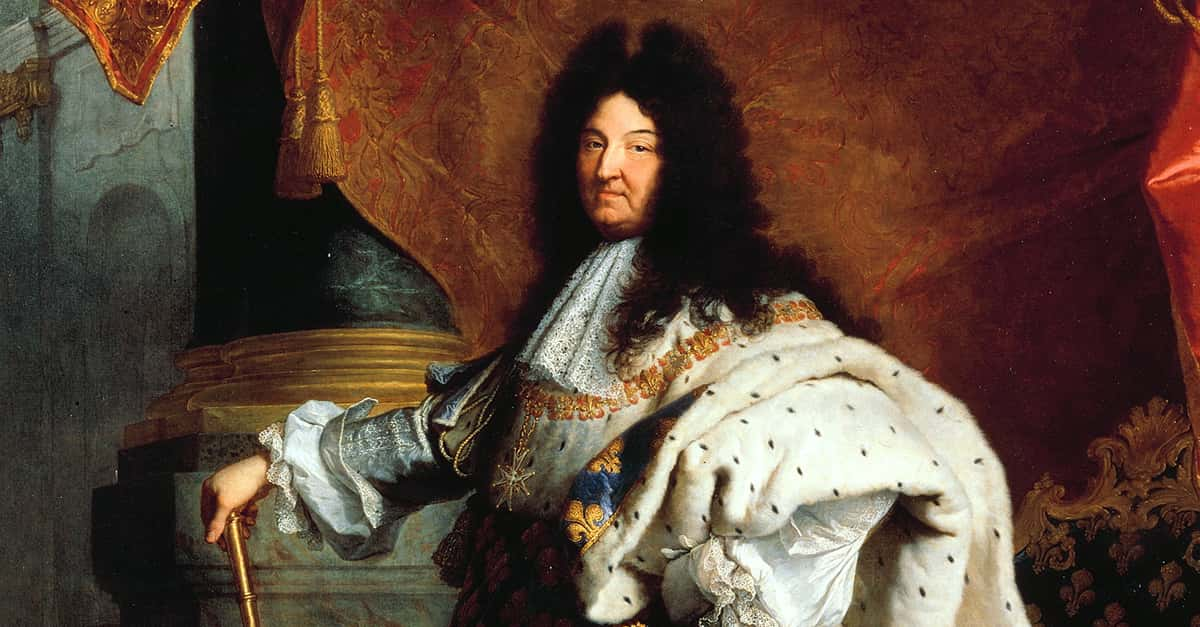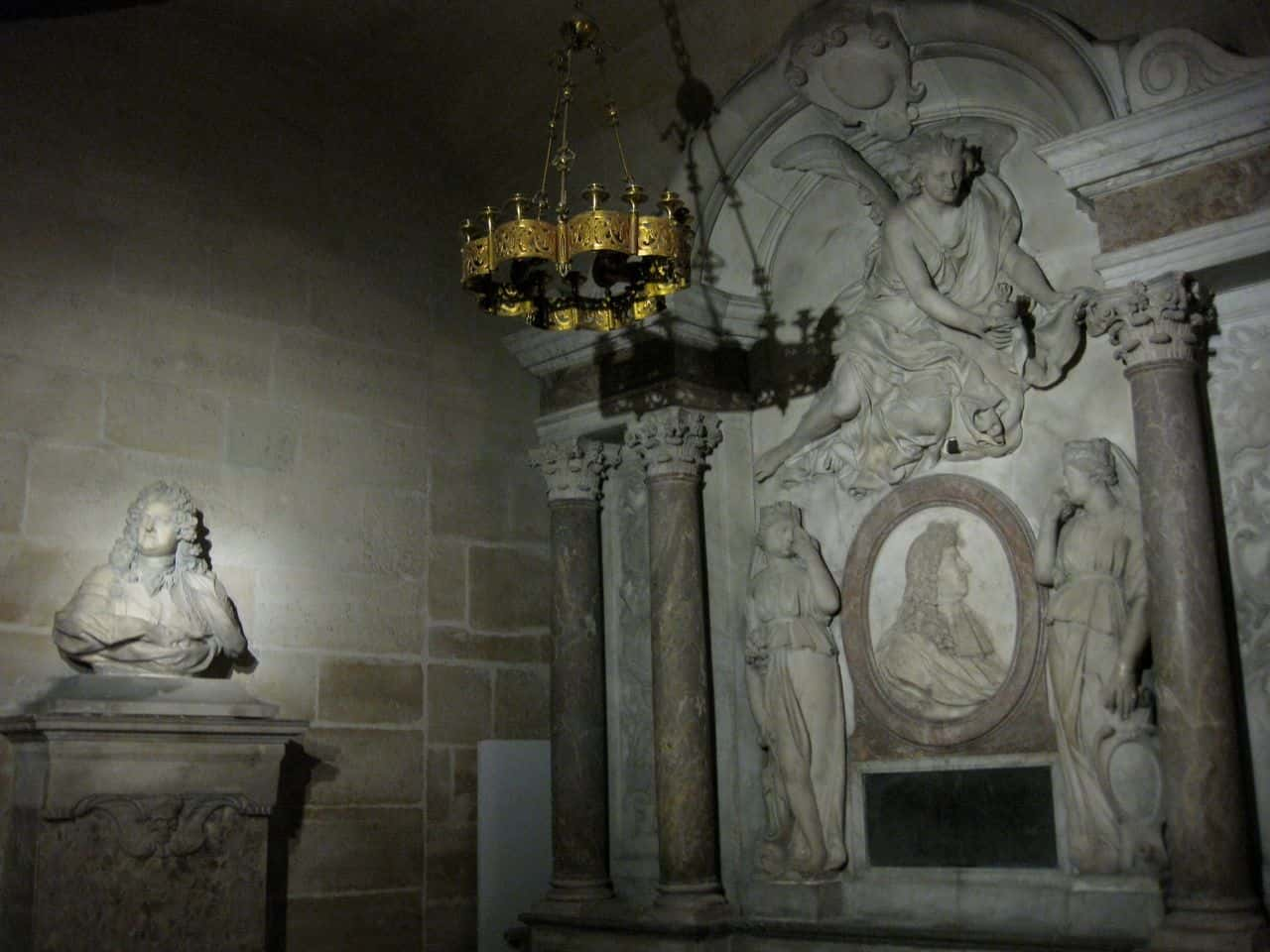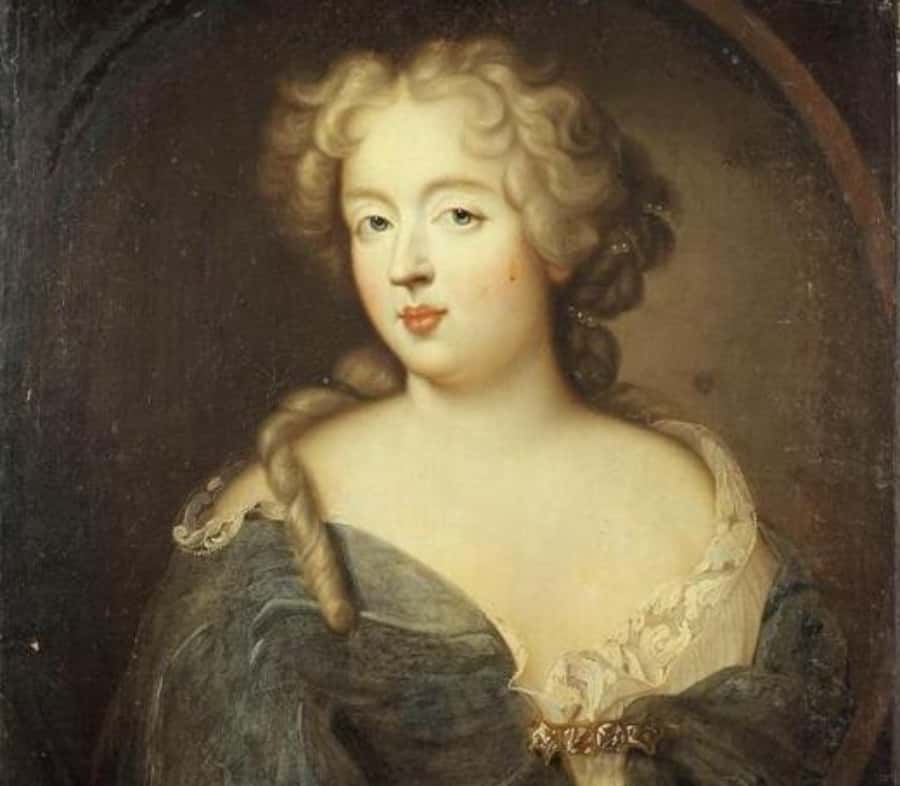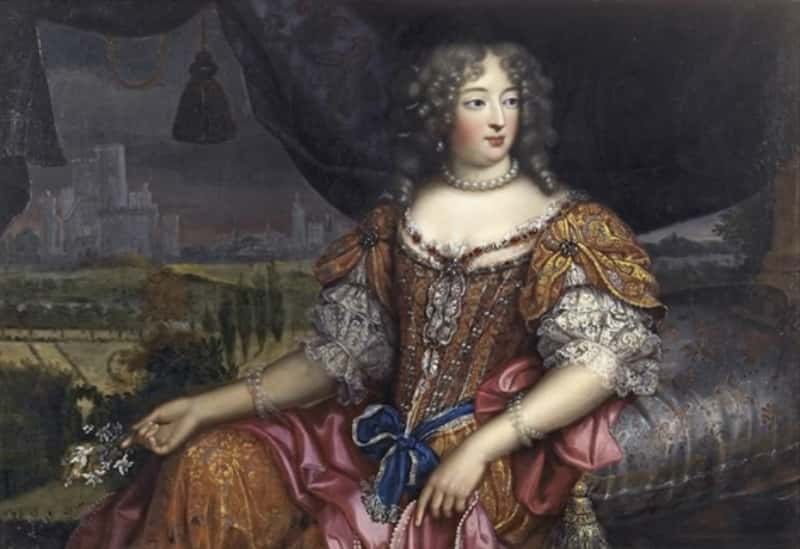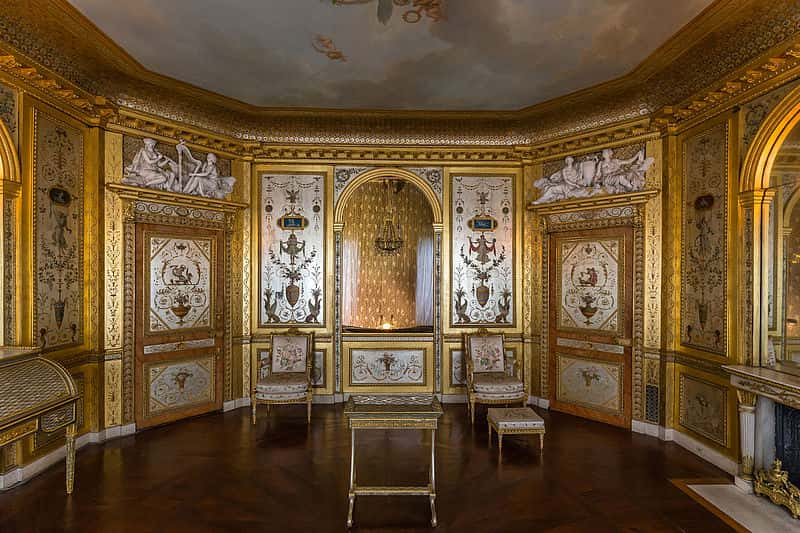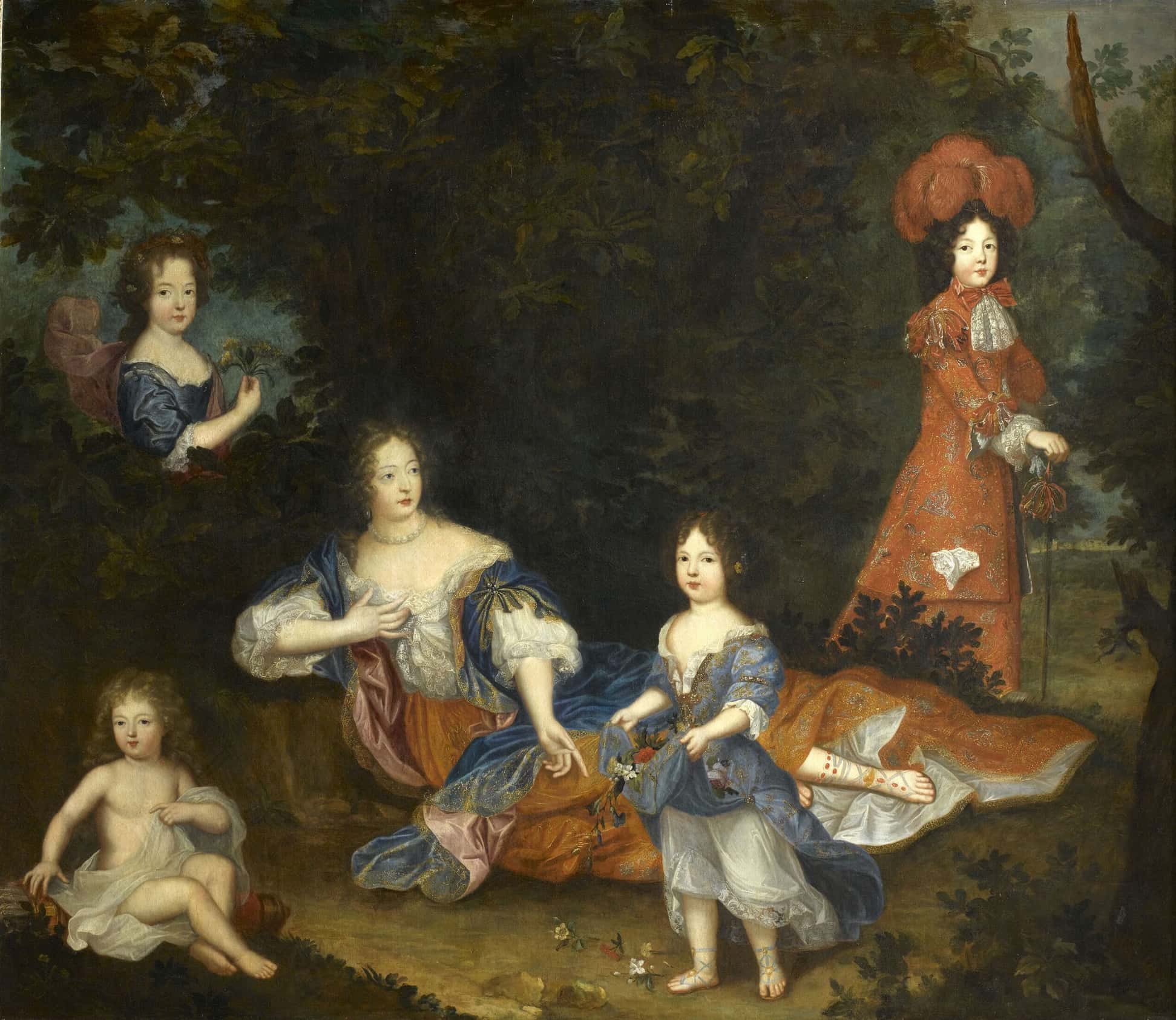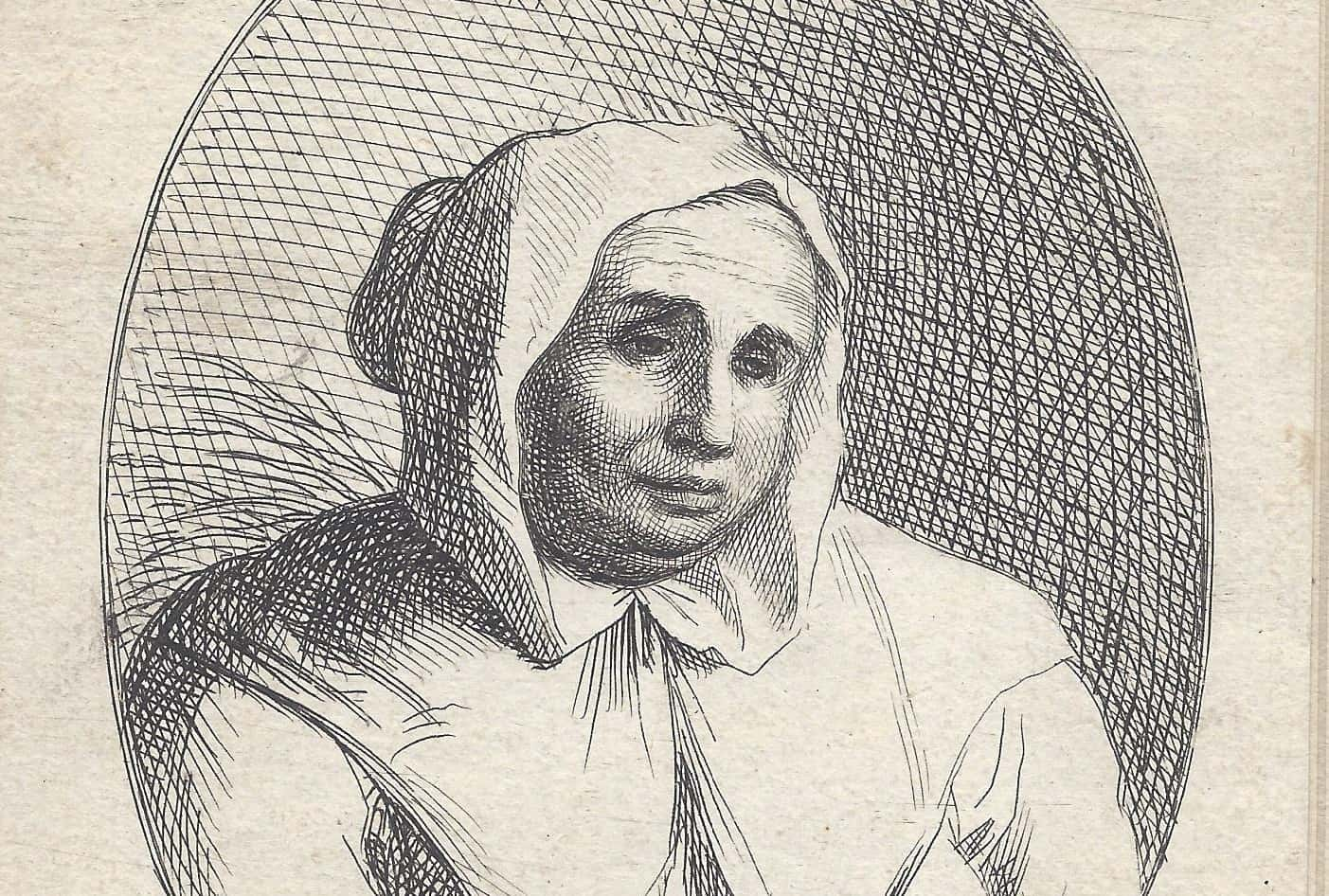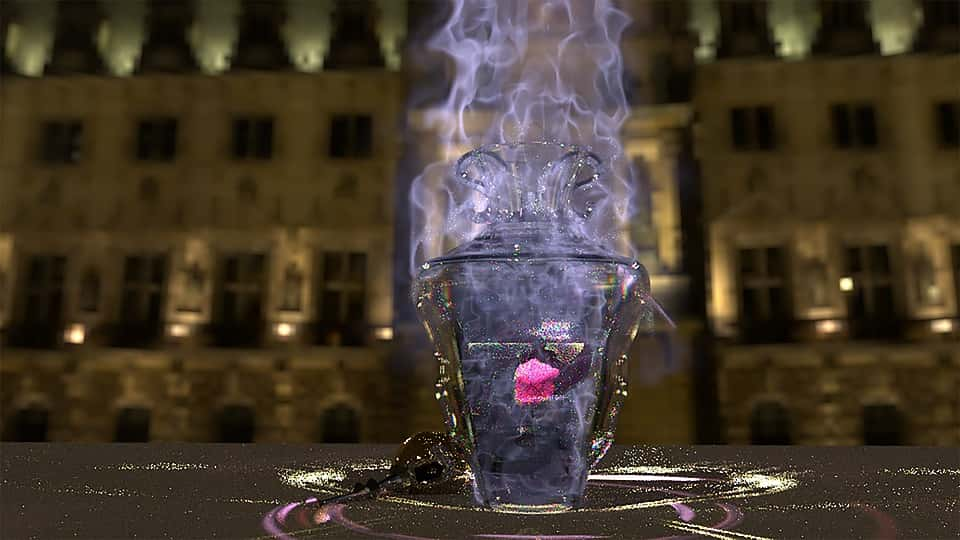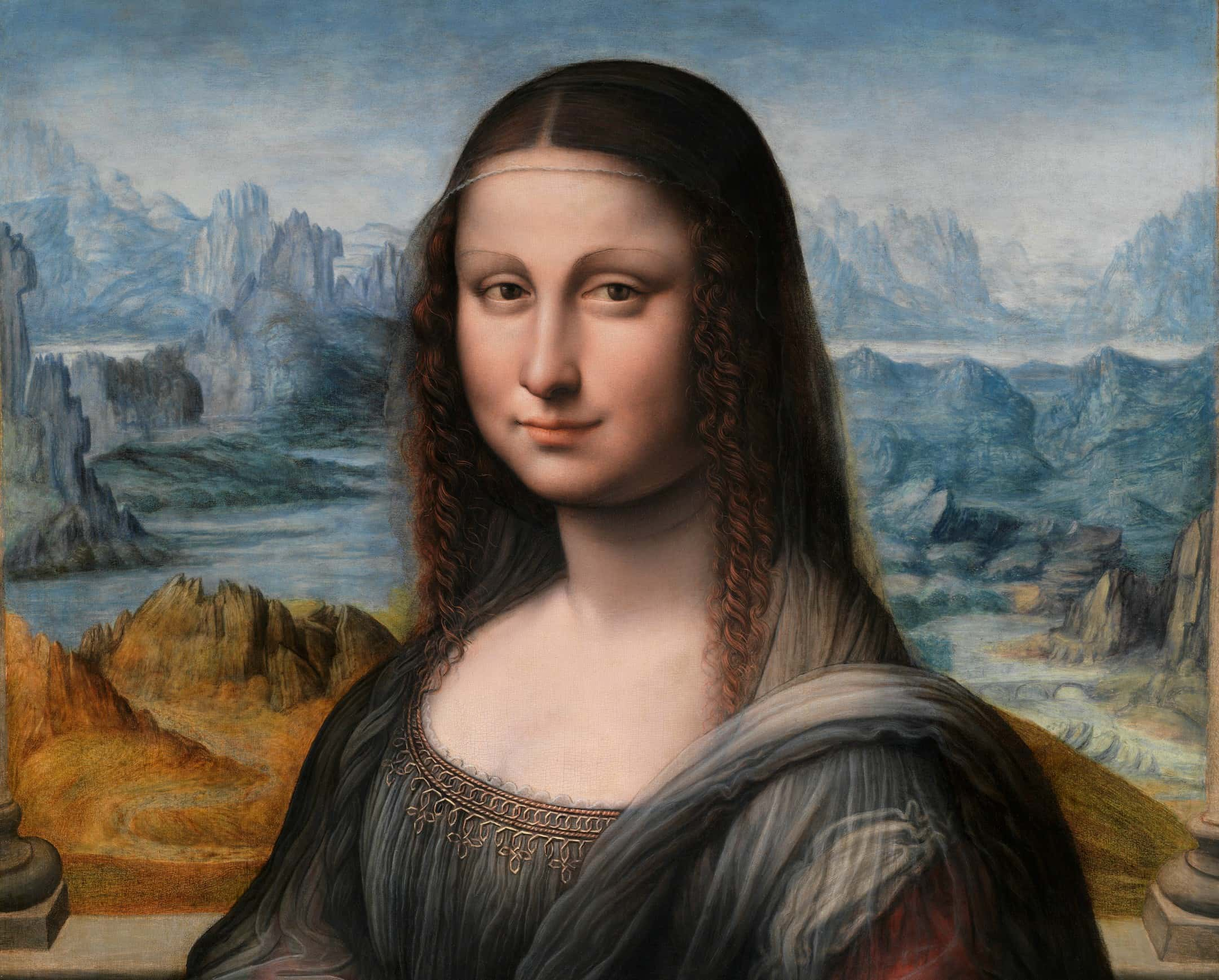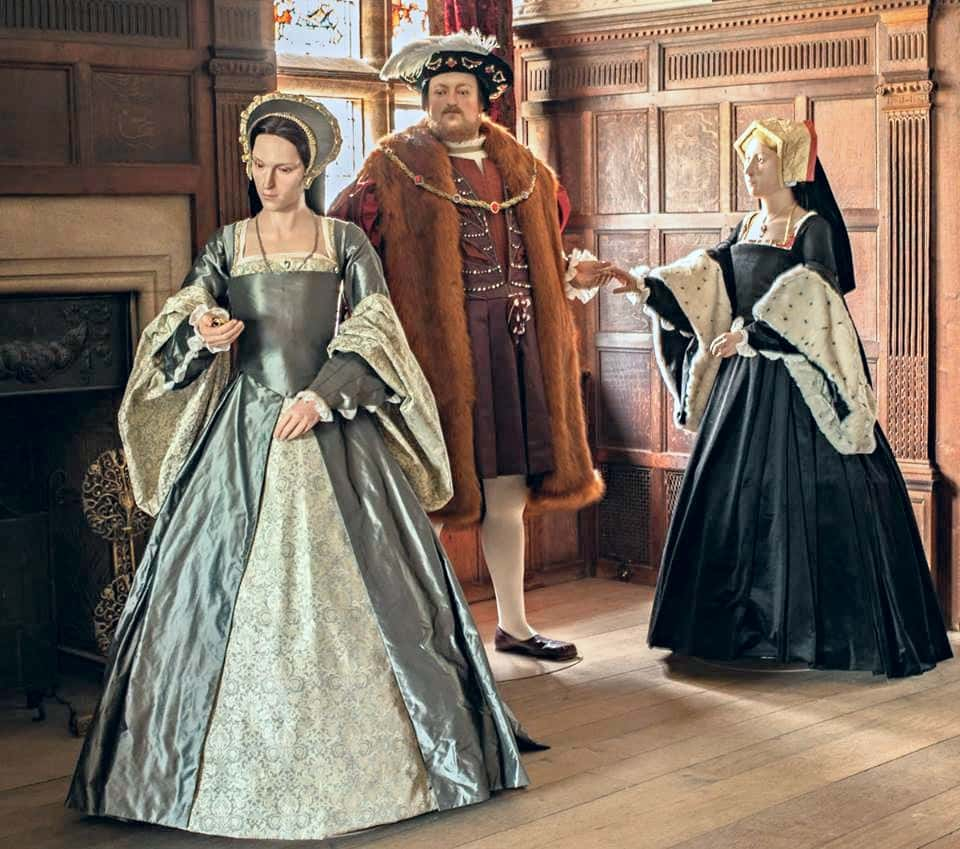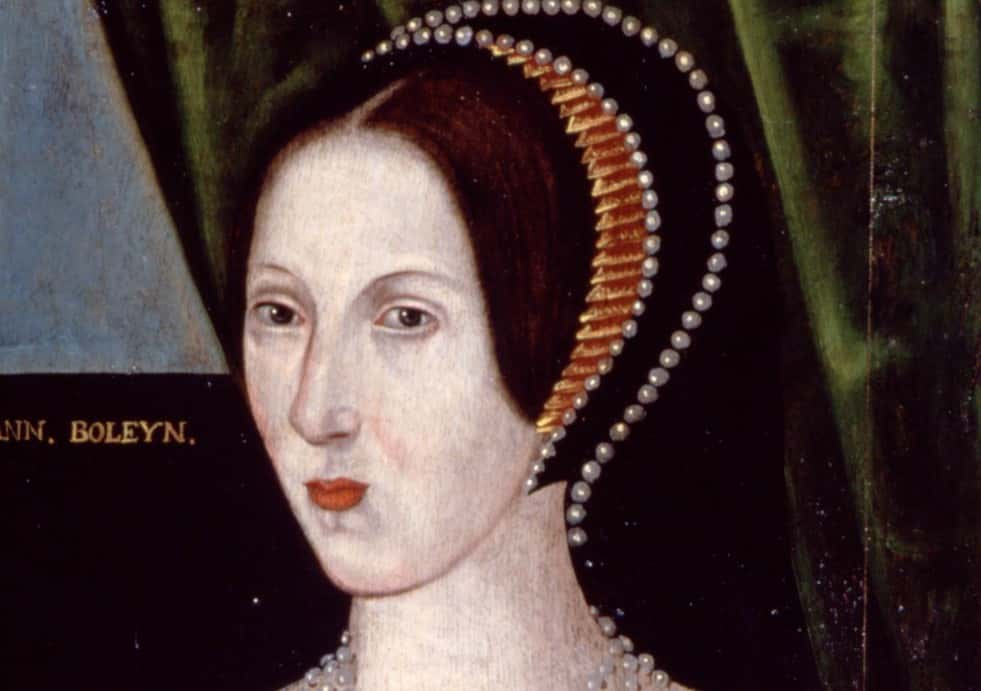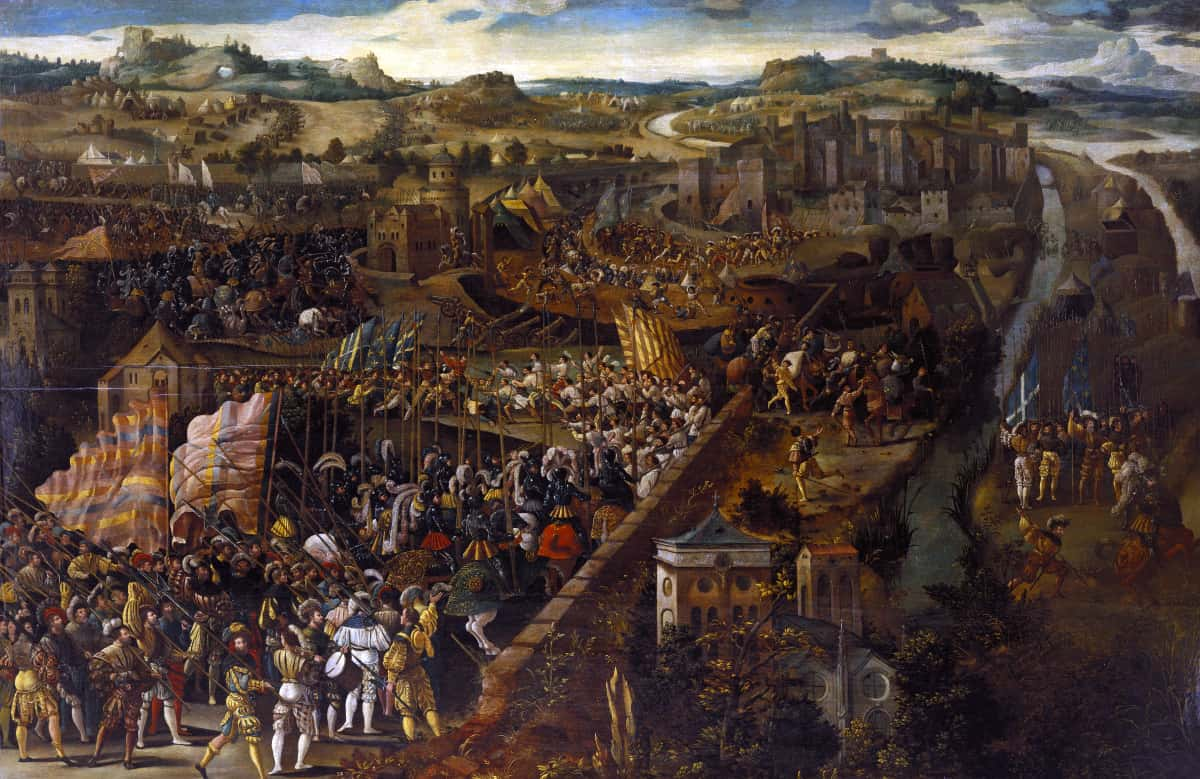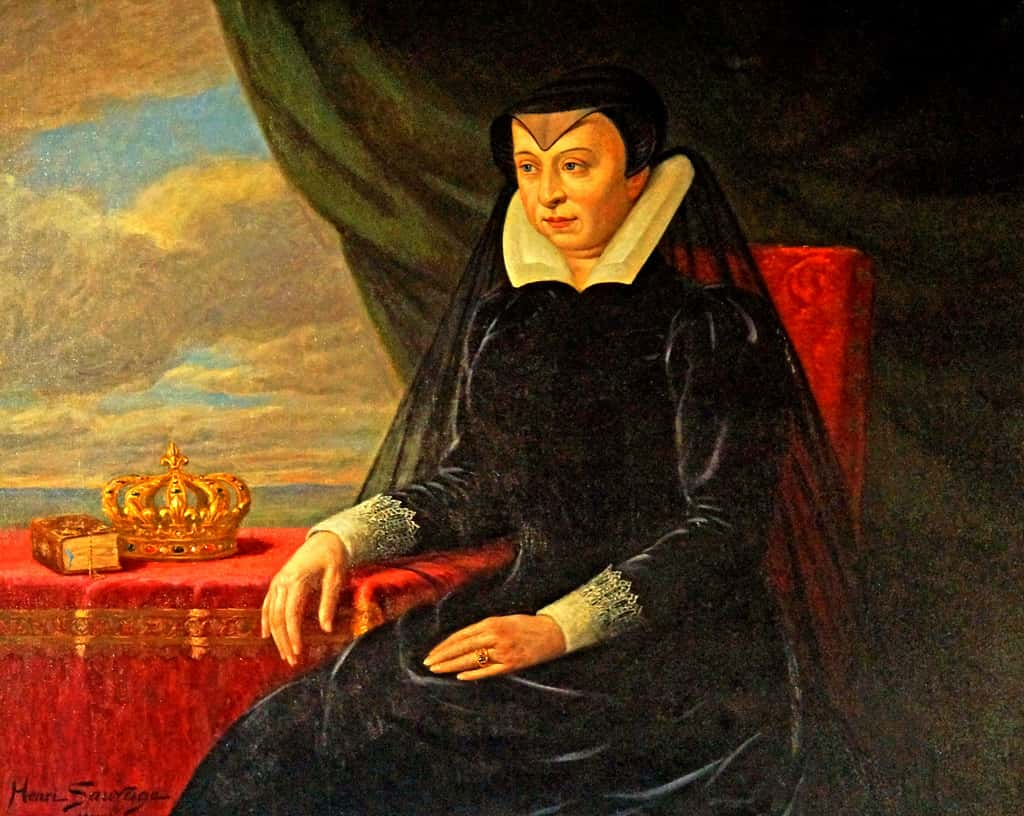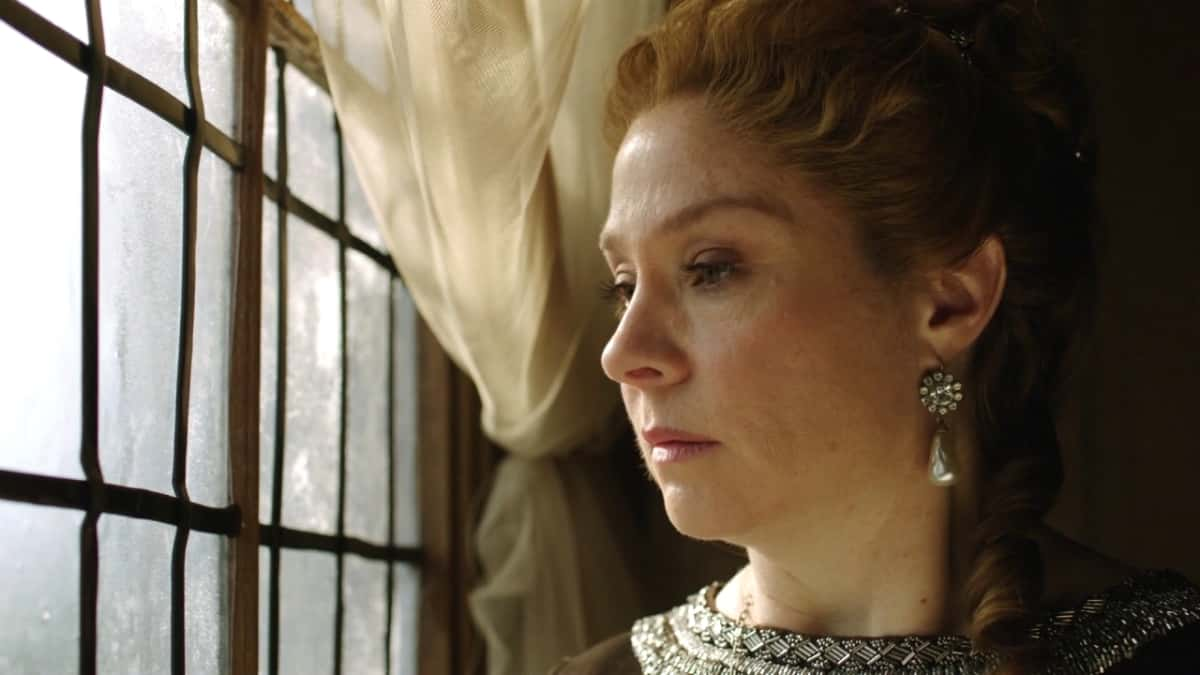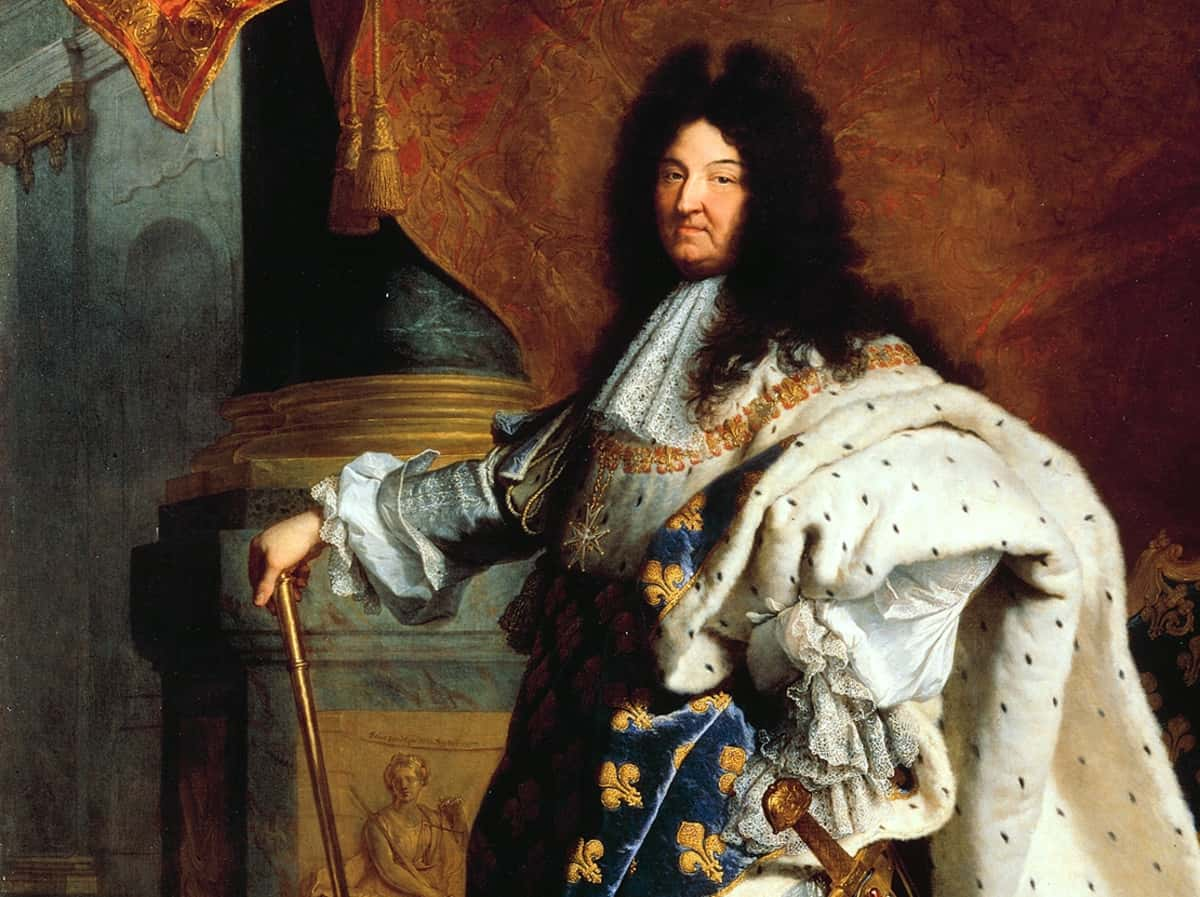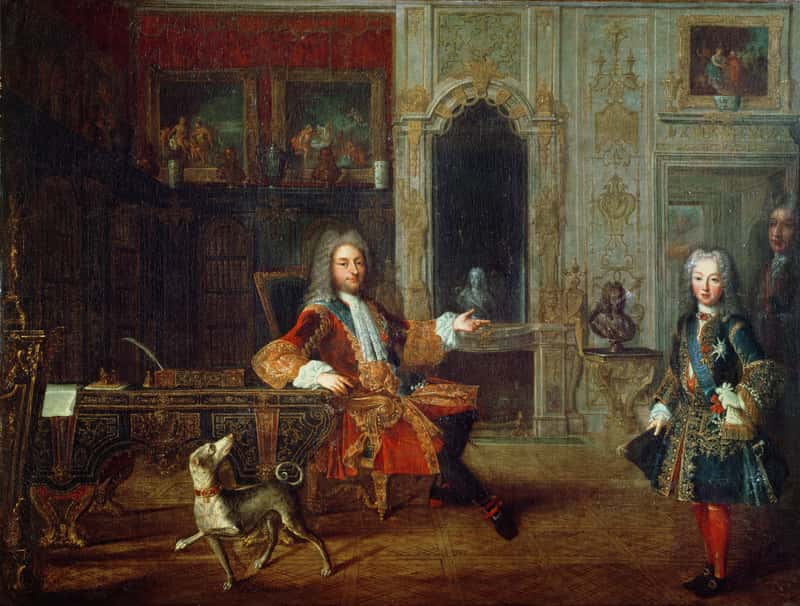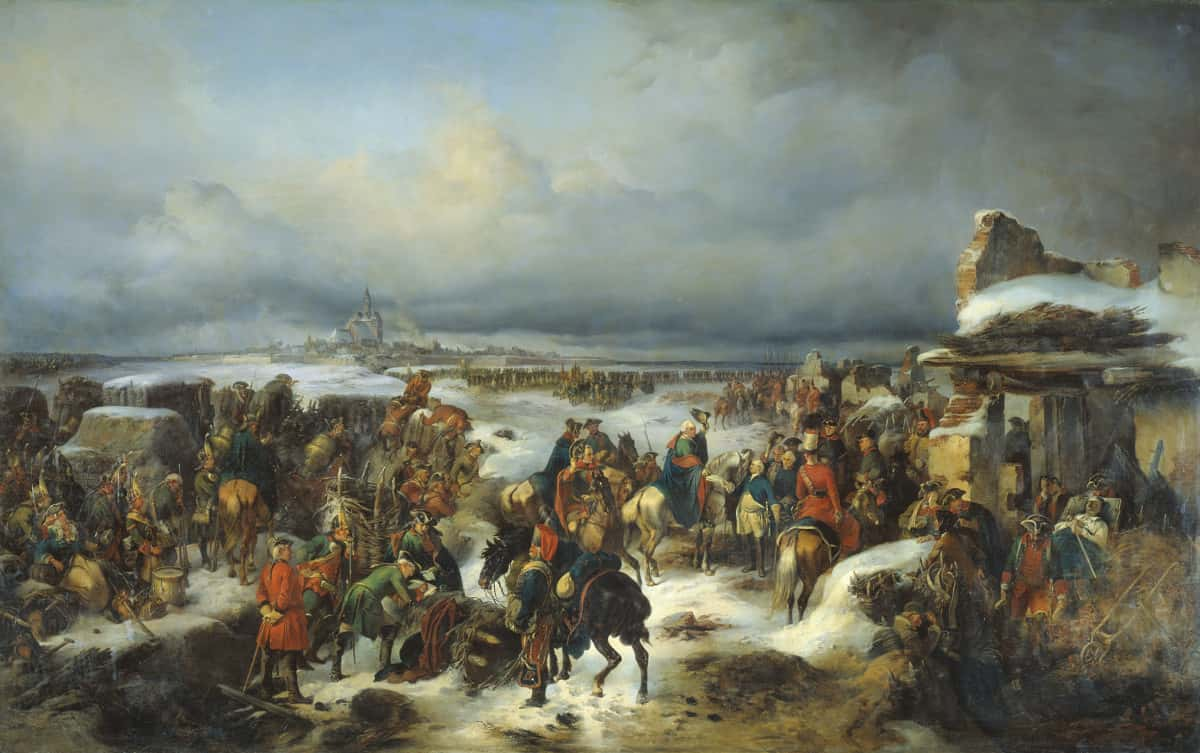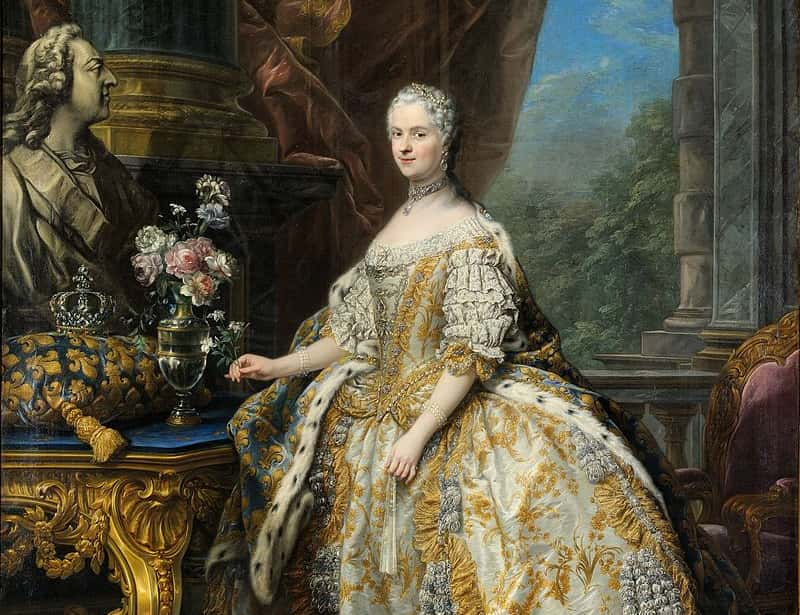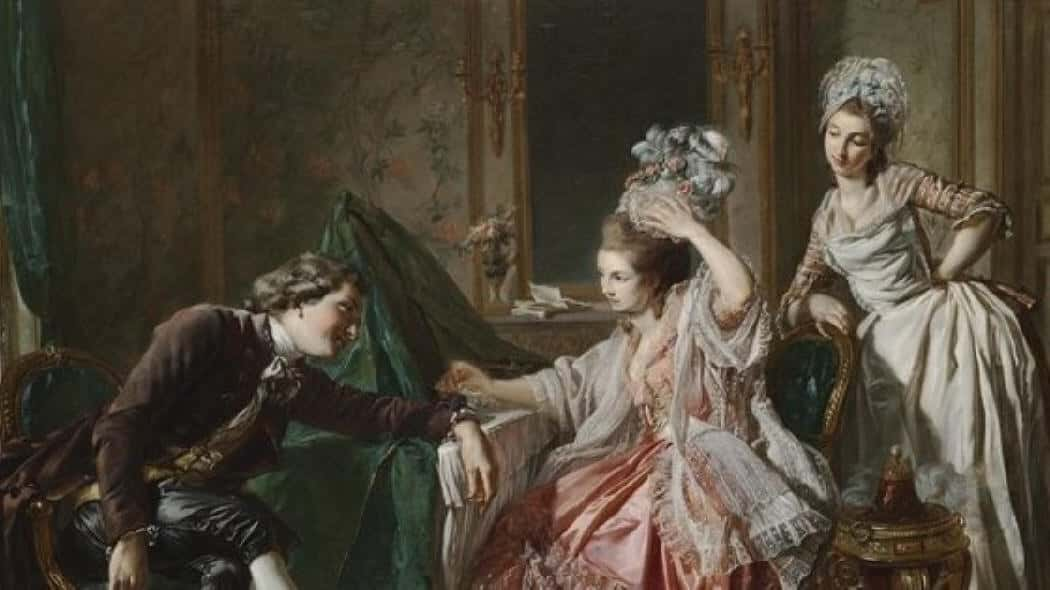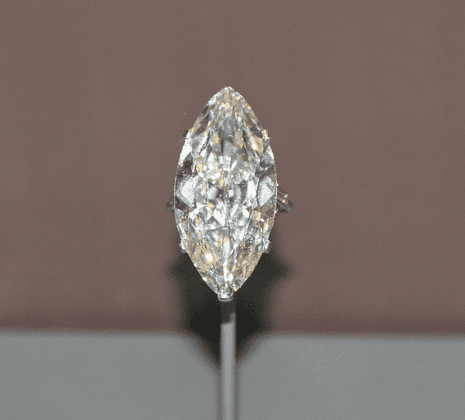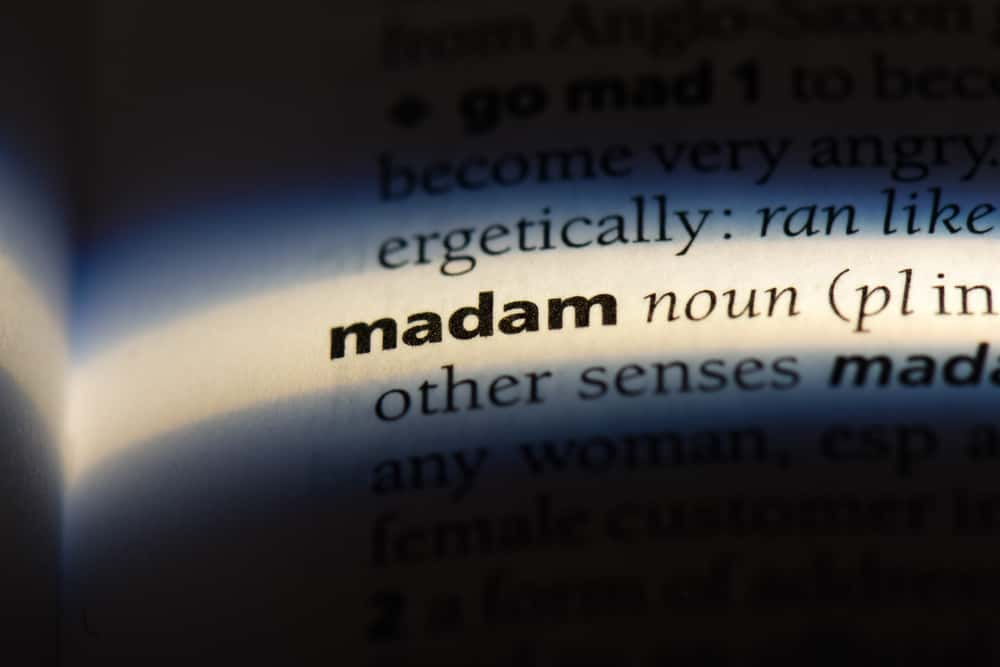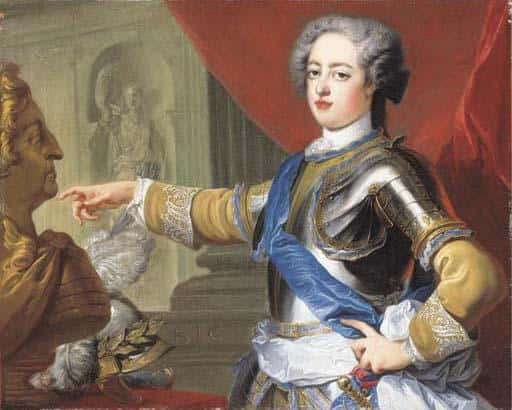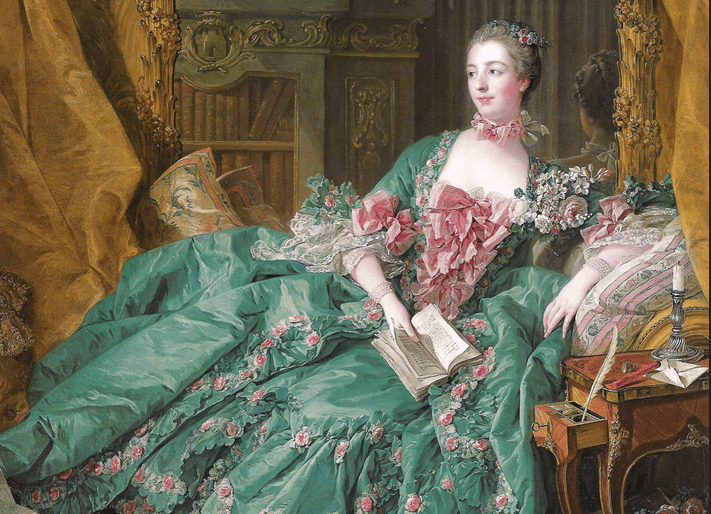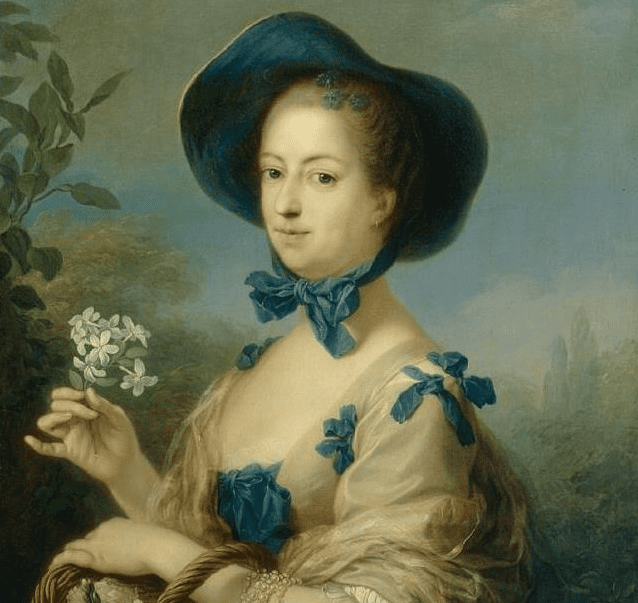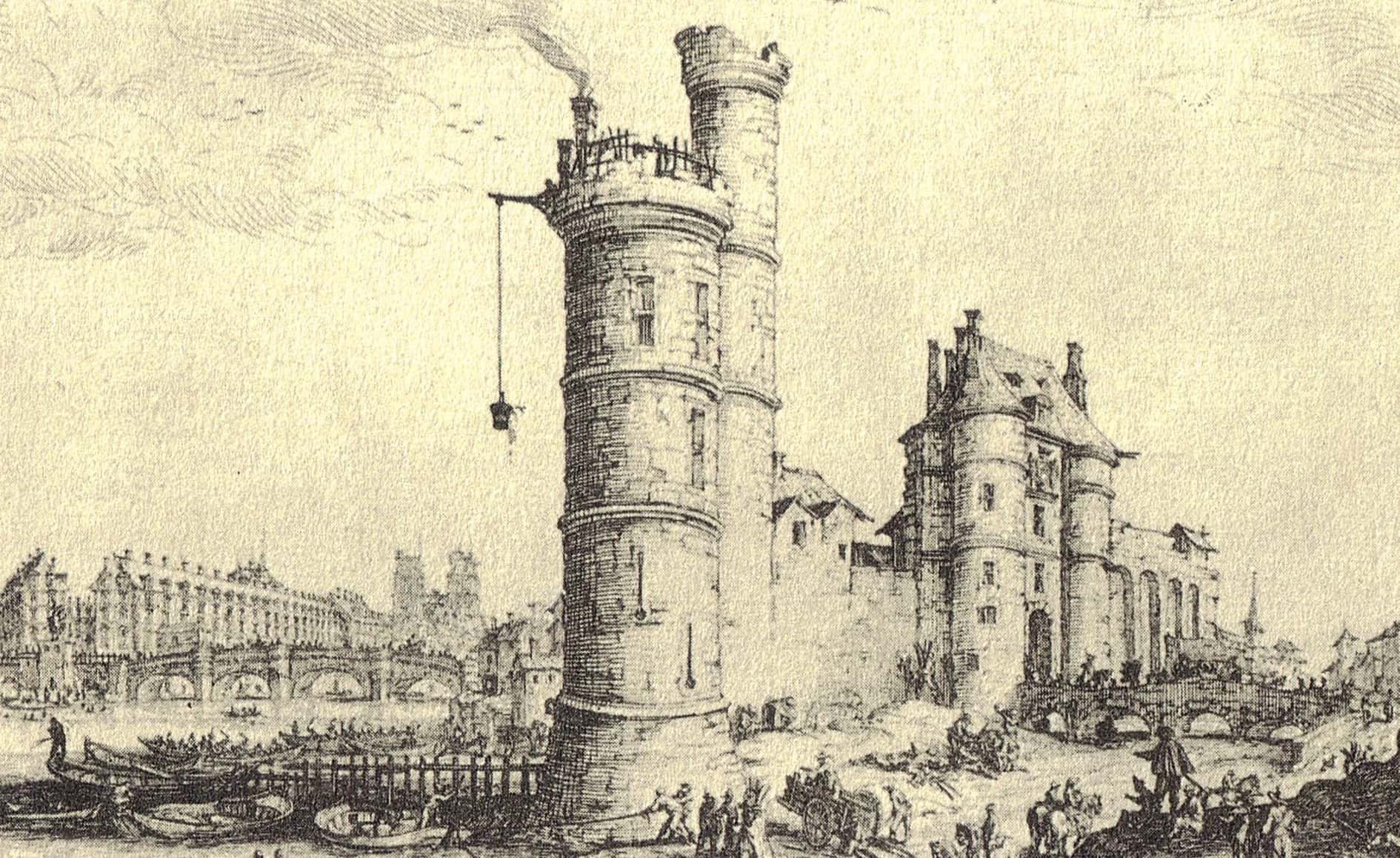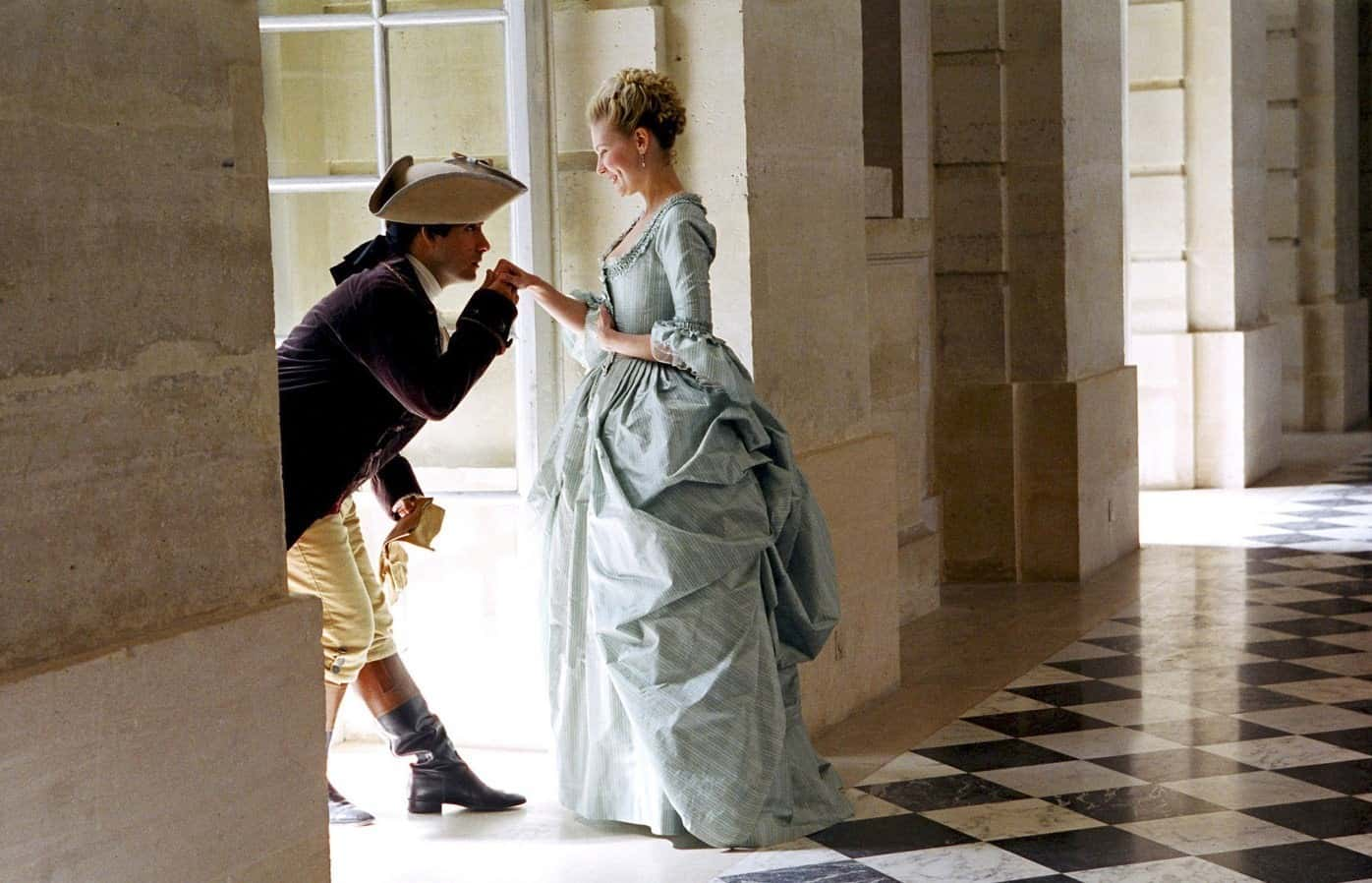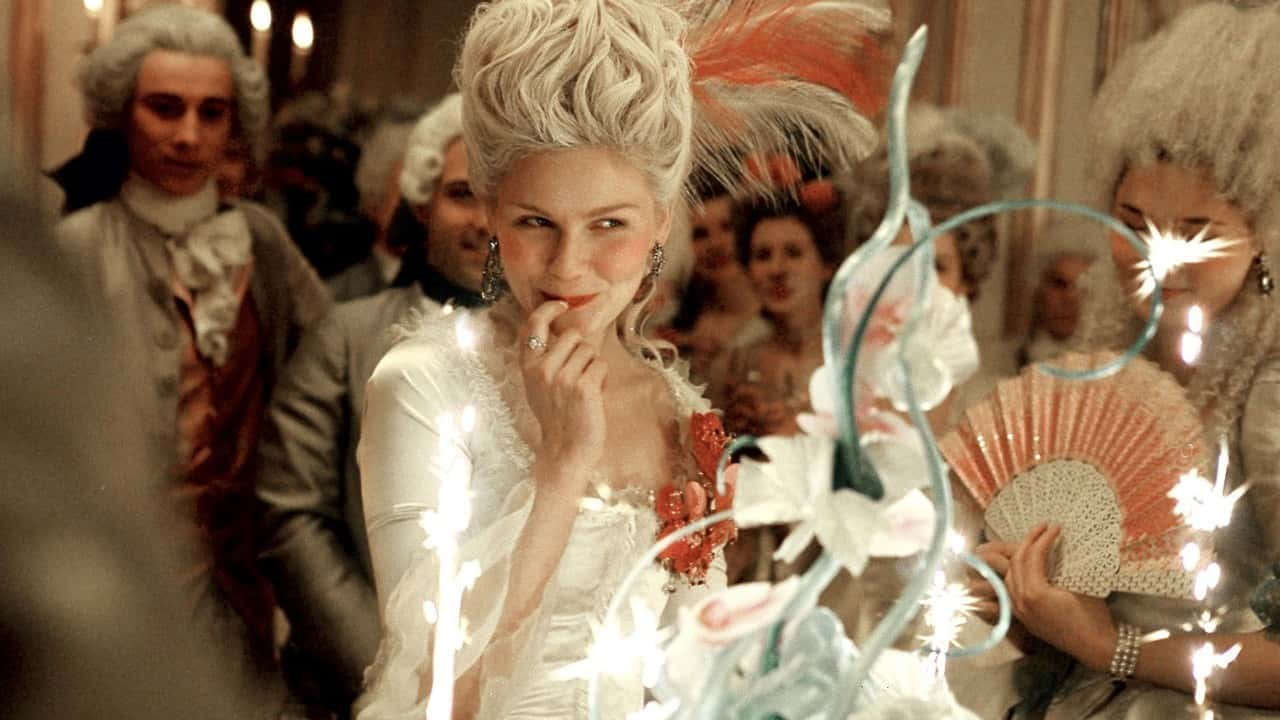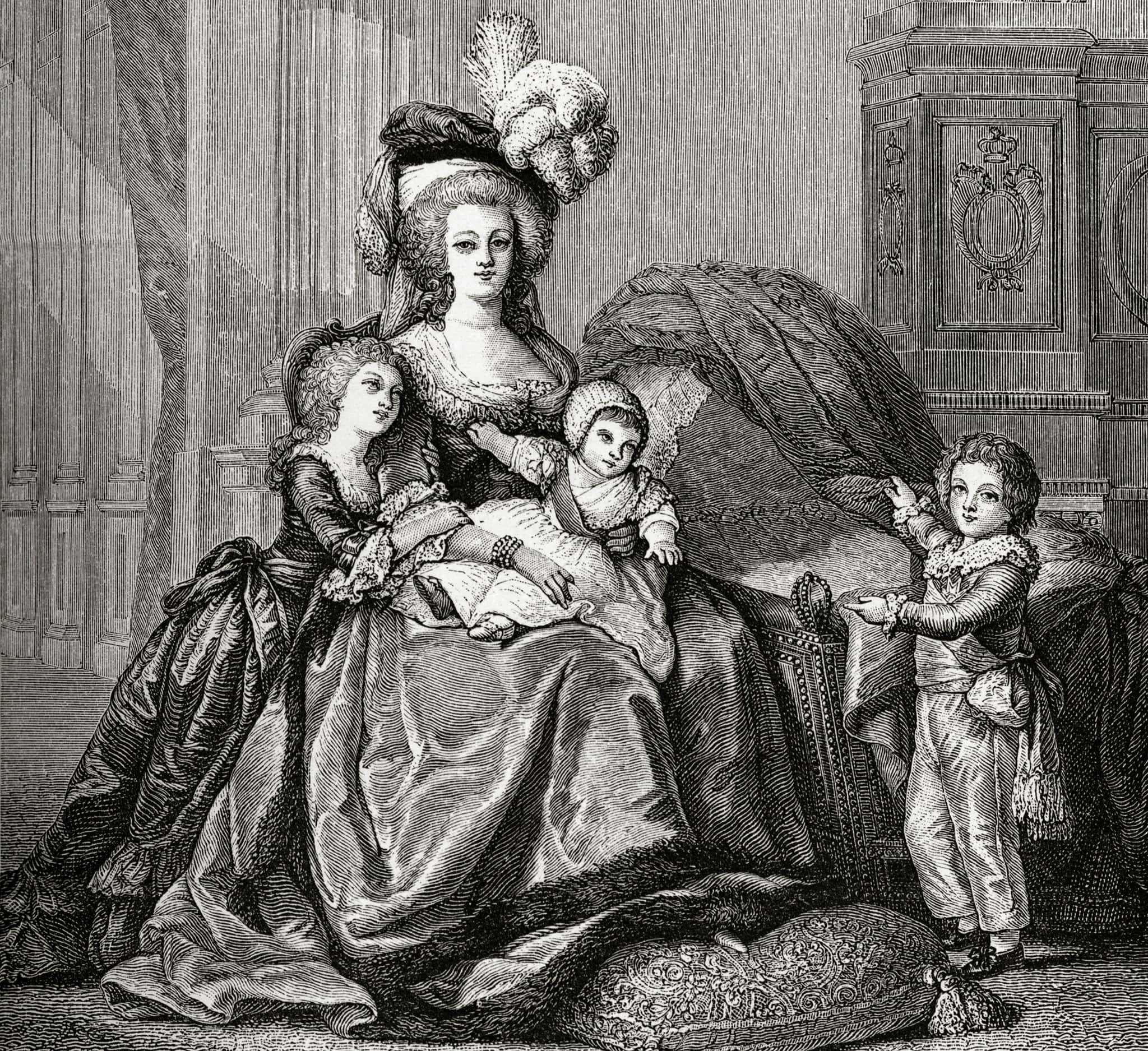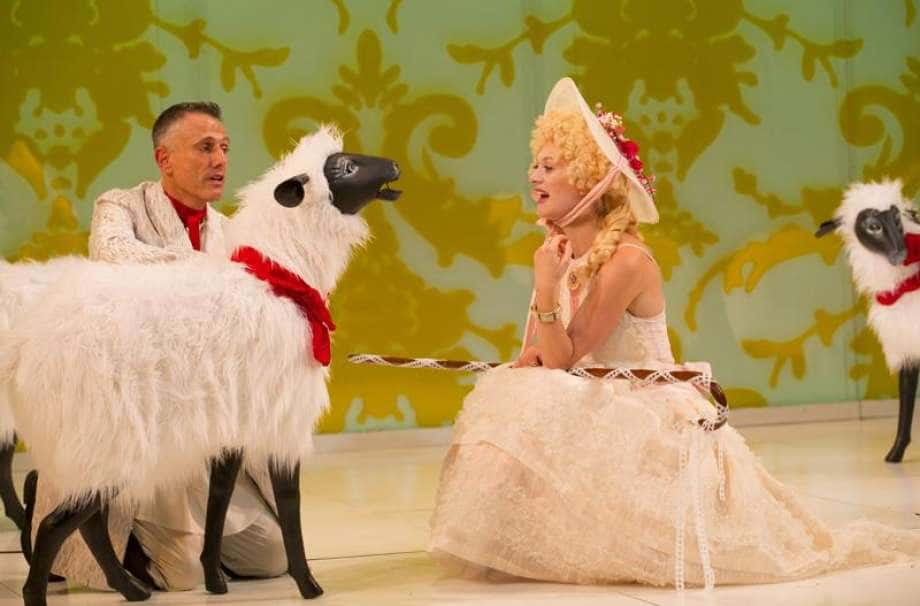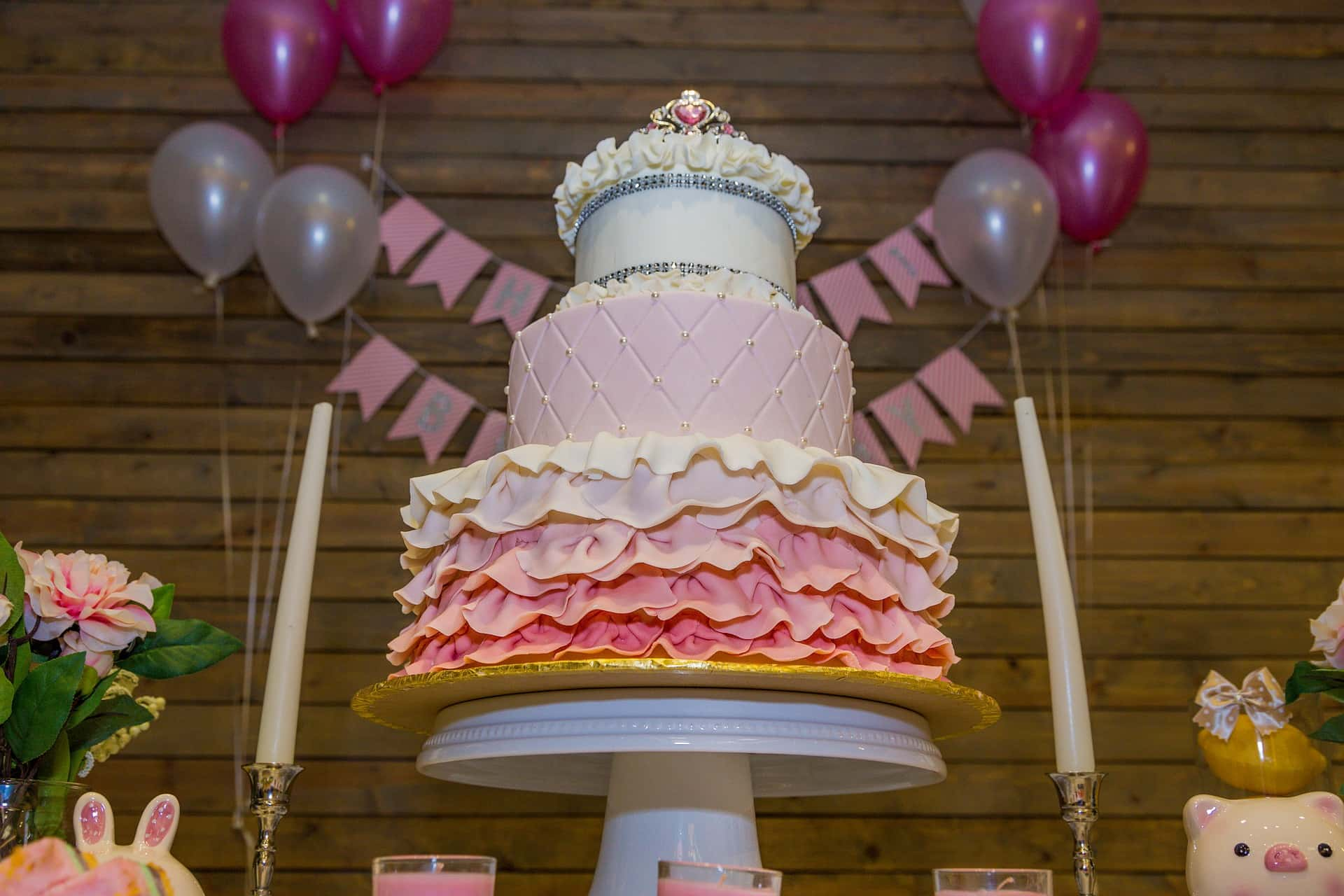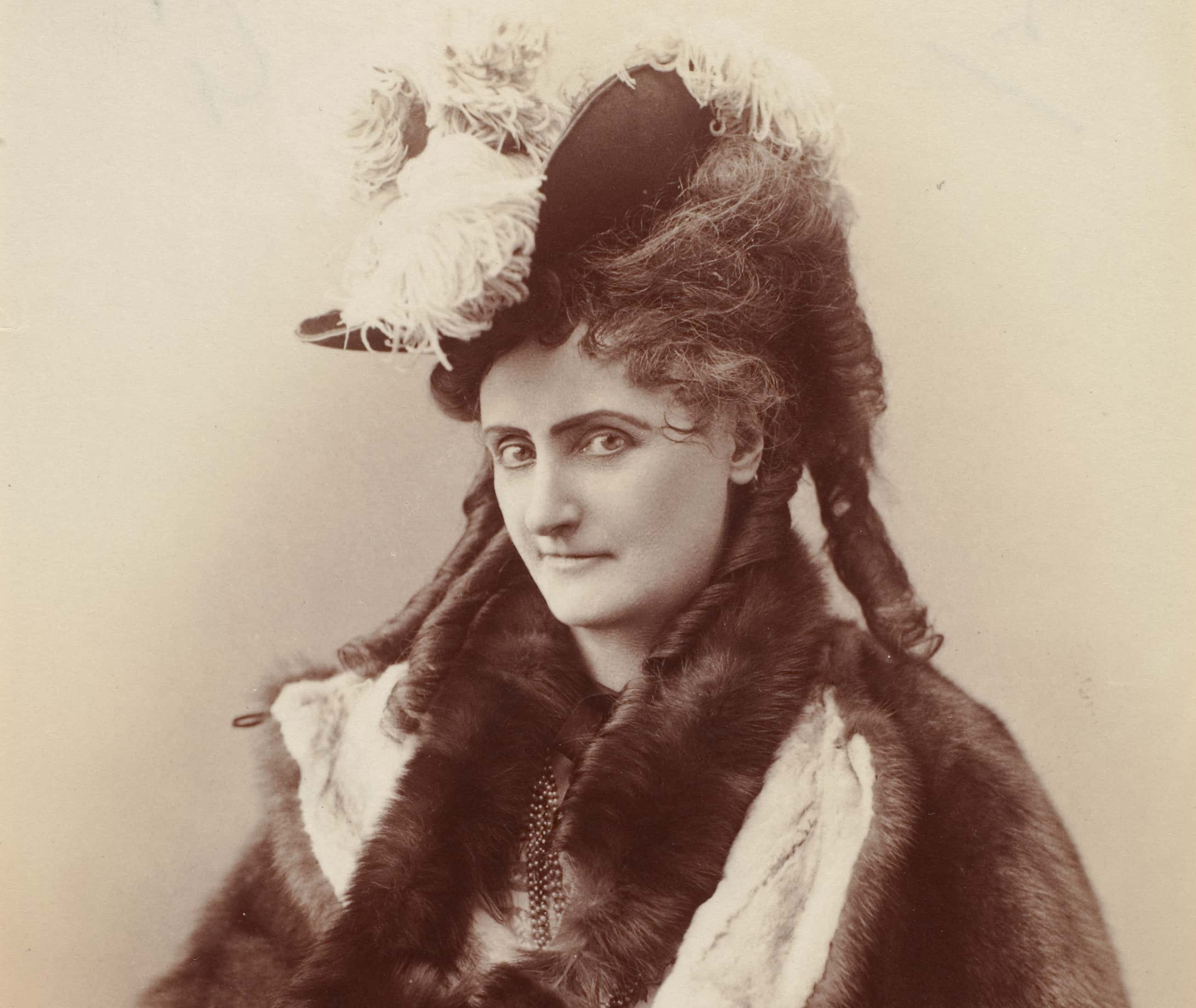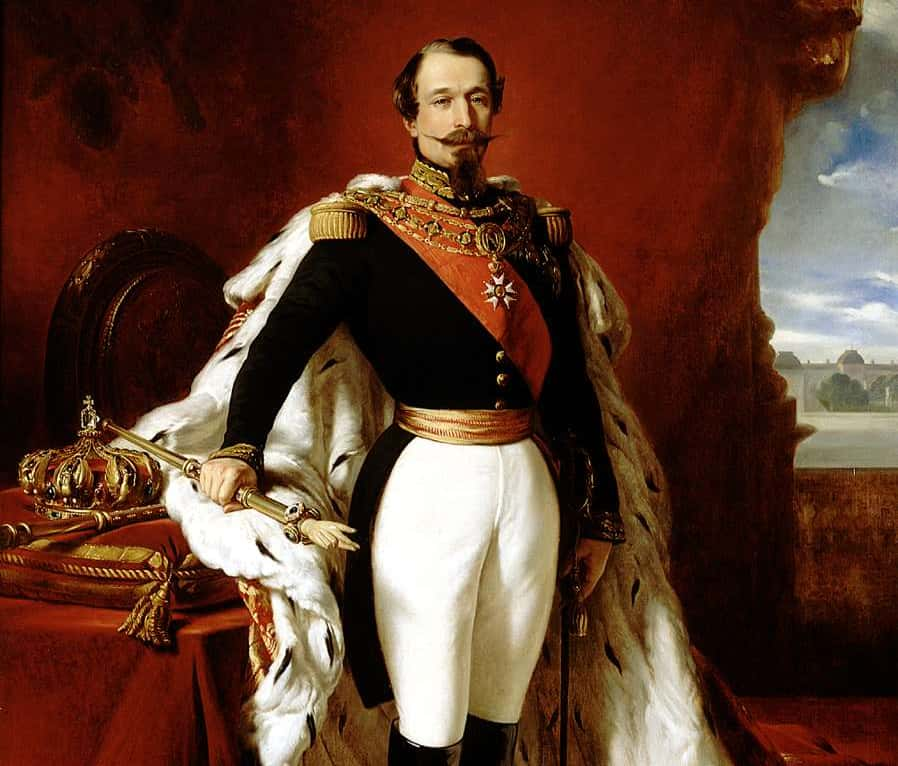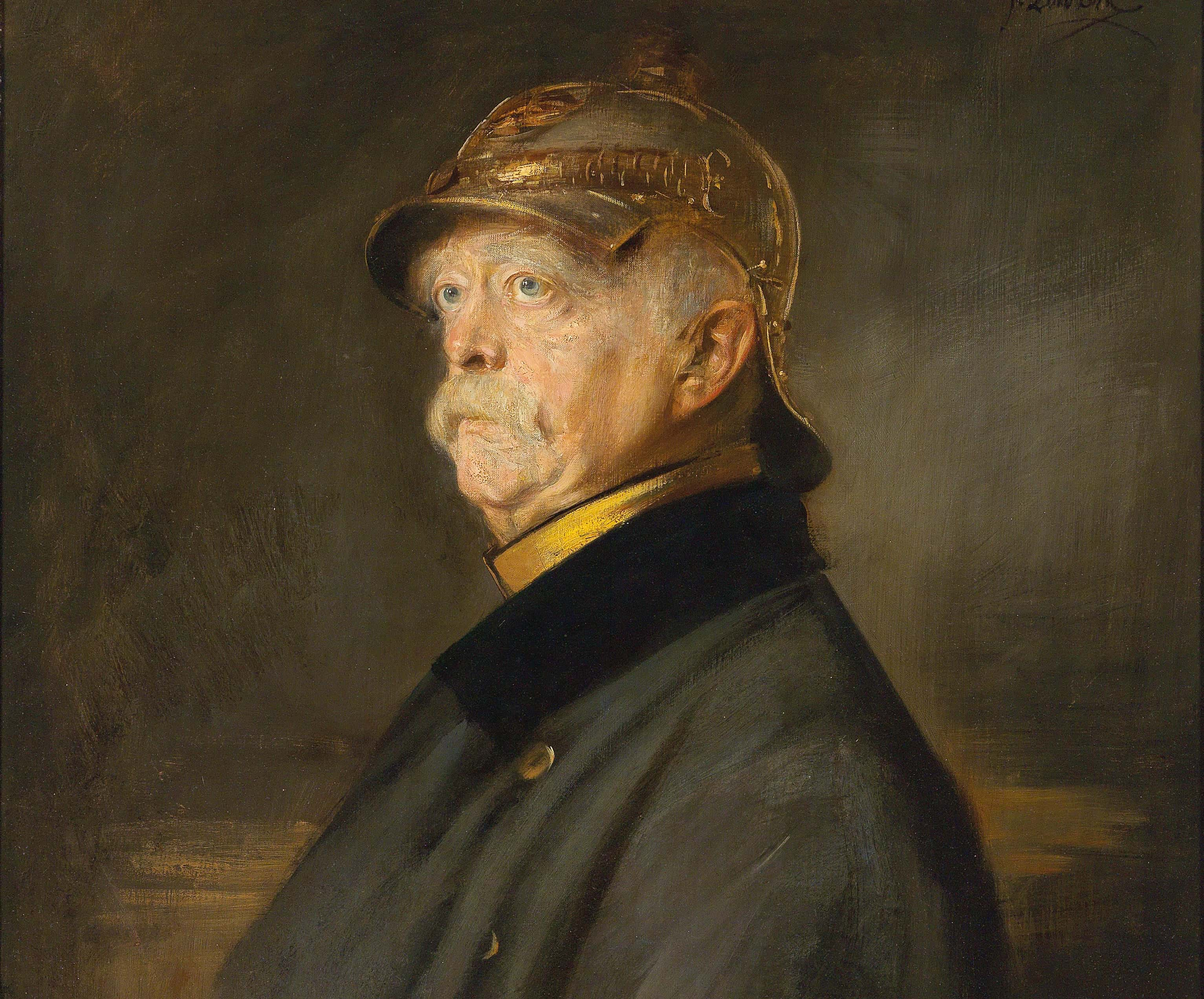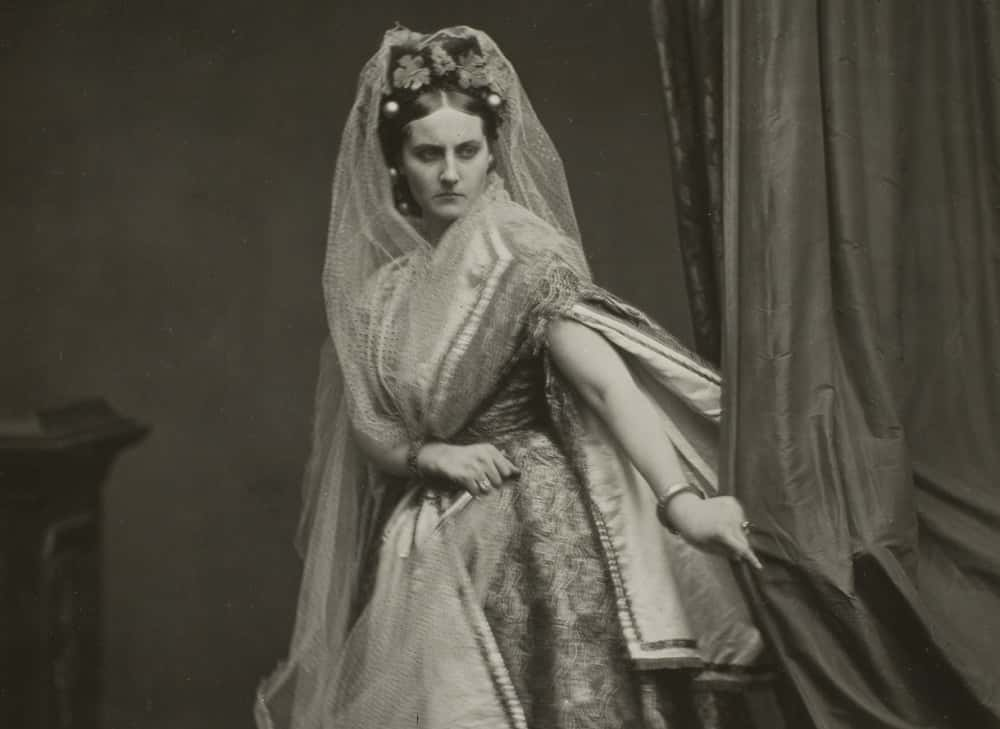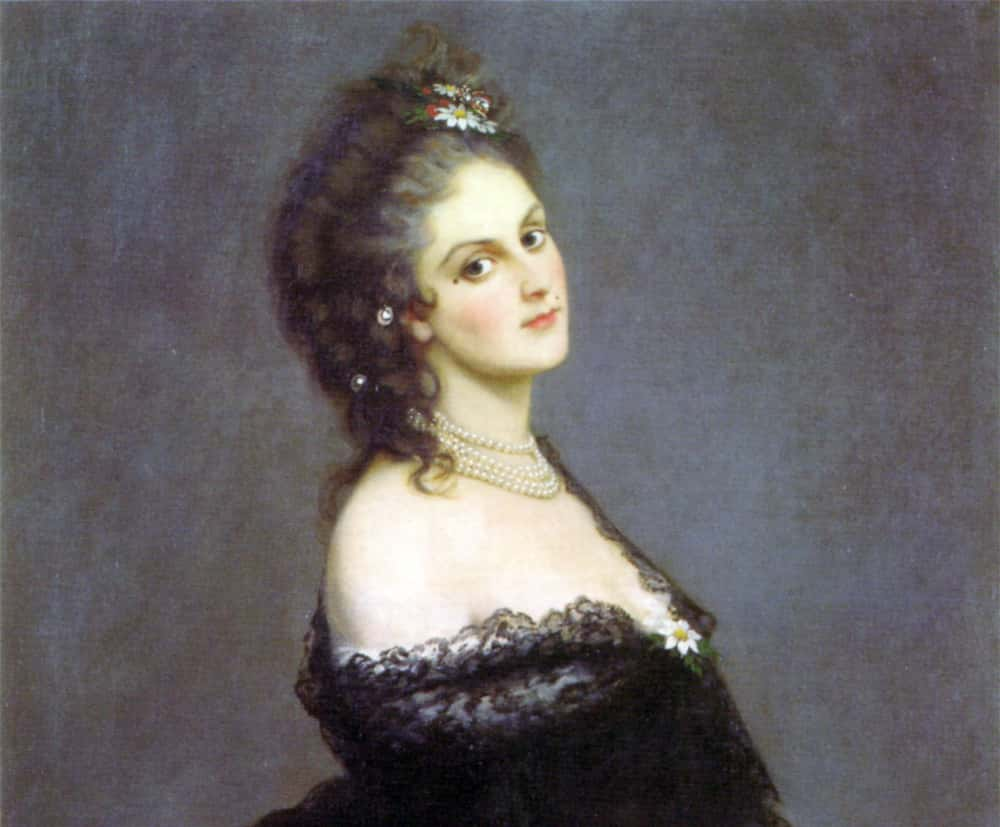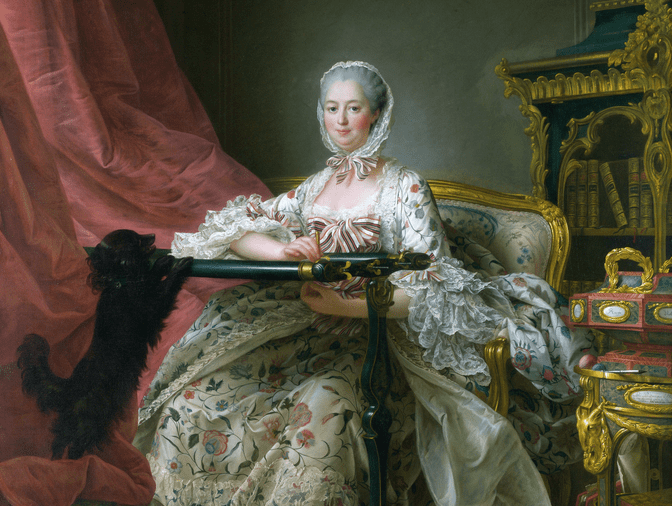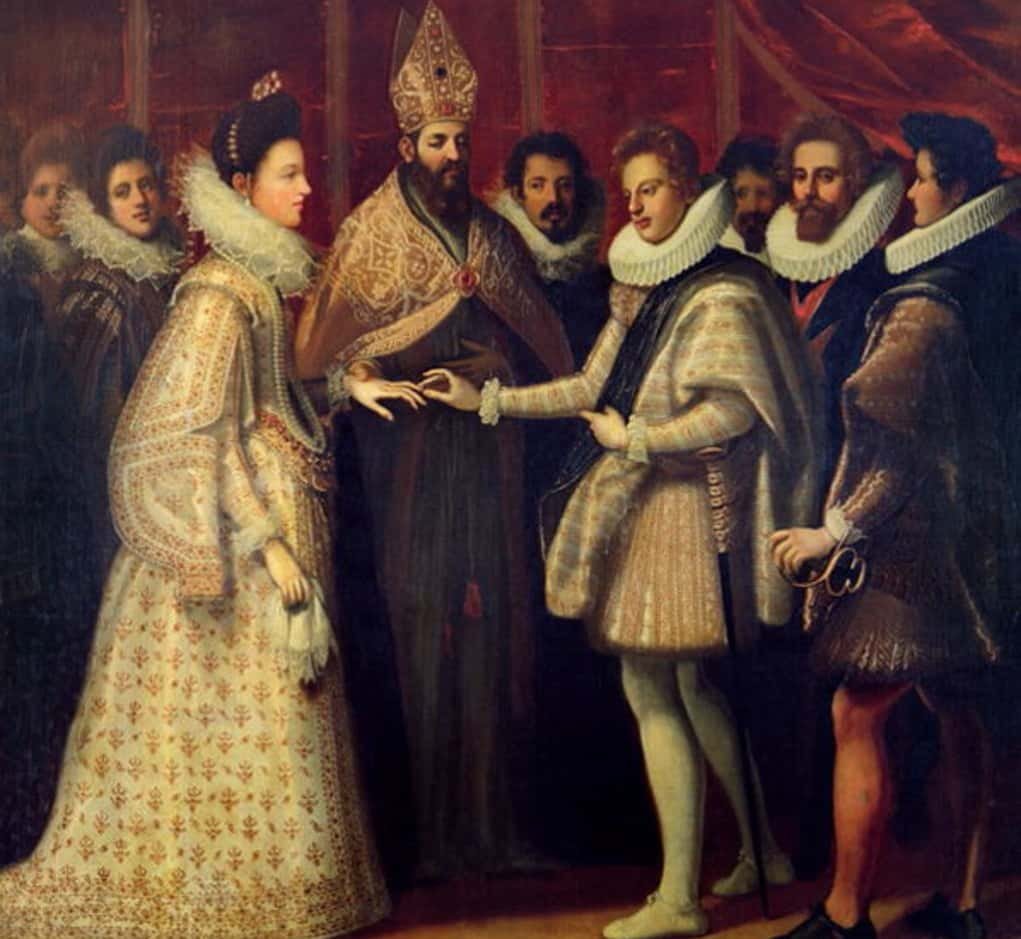12. Move Over Dorothy; Louis Wore Them First!
As a lifelong fashionista, Louis promoted red-heeled shoes as the ultimate status symbol. For the next century, Louis’s red shoes remained a necessary finishing touch to any noble ensemble.
13. Exhumed in the Epilogue
After dying of gangrene in 1715, Louis was buried in Saint-Dennis Basilica outside of Paris. His royal body remained undisturbed for about 80 years before being exhumed and destroyed by radicals in the French Revolution.
14. Follicles in the Streets, Bald in the Sheets
The king owned over 1,000 wigs and 413 beds! Now THAT’s a thread count!
15. From Temp to Permanent Position
The most powerful mistress of Louis XIV was clearly Madame de Montespan. She rose to chief mistress (maistresse-en-titre) by cultivating a friendship with his current chief mistress, Louise de La Vallière, and then swooping in to “temporarily” fulfill her friend’s “duties” when both Louise and the queen found themselves pregnant.
To make rejection a little less embarrassing for La Vallière, he did (at first) keep the women in the same apartments, so he could visit Montespan without drawing suspicion. What a gentleman.

History's most fascinating stories and darkest secrets, delivered to your inbox daily.
16. Every Tree Starts Somewhere
Montespan was no upstart. She was born on October 5, 1640, to one of the most ancient noble families in France, the House of Rochechouart. As the king’s mistress, her legitimized children with him would go on themselves to found royal houses in Spain, Italy, Bulgaria, and Portugal.
17. France’s Next Top Model
Montespan possessed a legendary beauty by the standards of her day. With her peculiar and large blue eyes, thick “corn-colored” blonde hair, and her fashionably voluptuous figure, she was held as “astonishingly beautiful,” even for a king’s mistress.
18. You’re Hired!
Montespan’s big break in the king’s bed came as both his queen and his main royal mistress became pregnant at the same time. Louise de La Vallière trusted Madame de Montespan to be a “temp” of sorts while she was closed away for childbirth. Madame lived the contract laborer’s dream by staying on the job long after La Vallière had given birth.
19. Bad Stuff Happens in the Bathroom
According to lore, Montespan dropped towel to get on top. It’s said she first seduced the king by letting her bath wrap fall down as he happened to be spying on her shower. I’m sure there is a prologue to this story that is romantic and not totally creepy.
20. Roommate Drama
King Louis’s transition period from de La Vallière to Montespan was awkward for all involved. At first, he made his discarded lover (La Vallière) and current lover (Montespan) share an apartment. Both Louis and Montespan were married (to other people), so they were committing double-adultery. This arrangement was so Louis could visit his new squeeze without arousing the suspicion of Montespan’s husband.
We’re not sure how La Vallière reacted…
21. Dad Says It’s My Turn to Be Valid
Altogether, Madame de Montespan had seven illegitimate children with Louis XIV. The first three children who survived were legitimized in 1673, after the lack of male heirs for Louis put the succession in crisis.

History's most fascinating stories and darkest secrets, delivered to your inbox daily.
22. You Don’t Have to Rub It In
What’s less attractive than a sore winner? Montespan was known for openly disrespecting Queen Maria Theresa in public—an act for which even the lovestruck Louis himself had to reprimand his mistress.
23. Cheaters Never Prosper
From 1677 to 1682, a large ring of poisoners—and poison profiteers—was uncovered in France in what became known as the Affair of the Poisons. Most scandalously, many of the clients and collaborators implicated in the charges were members of the French aristocracy itself. One of the fingers pointed right next to the king: Madame de Montespan was accused of using these illegal wares to poison her romantic rivals, thus keeping the king’s eyes on her.
24. These Violent Dances Have Violent Ends
In 1679, Montespan was accused of using witchcraft and aphrodisiacs to stay ahead of King Louis’s other lovers. A midwife named Catherine Monvoisin, or La Voison, had been arrested as part of the Affair of the Poisons—and she had named the king’s chief mistress as one of her prolific clients. La Voison even alleged that Montespan performed black masses, a sacrilegious accusation that effectively destroyed Montespan’s reputation, regardless of the truth.
25. Love Juice
In the specifics of La Voisin’s accusations against Montespan, the midwife alleged Montespan and a witch would call on the Devil to ensure the king’s love in his mistress. To seal the deal, they also sacrificed a newborn baby and used the blood and bones in a love potion for the king.
It’s said the king’s food was poisoned for 13 years to keep his heart—and other parts—in line for her. Bon appetit!
26. Not Your Mom’s Cabbage Patch Kids
It’s said that police up dug 2,500 baby corpses in La Voisin’s garden, all of whom were used in Montespan’s black mass love rituals. Of course, this is almost definitely a myth or exaggeration, as no contemporary evidence of such a mass grave exists.
27. I Smell a Crown in Your Future
A large man in both personality and stature, King Francis I of France was known for his “big” personal parts. That’s right: his nose. One of his many nicknames was “François du Grand Nez” or "Francis of the Large Nose.” It’s not the most creative name, but at least it was accurate.

History's most fascinating stories and darkest secrets, delivered to your inbox daily.
28. Your Low Sperm Count is My Gain
A series of reproductively-challenged kings paved Francis’s way to the throne. At the time of his birth, Francis of Orléans was only third cousin to the sitting king, Charles VIII. Charles himself died without children in 1498, which gave the throne to Francis’s other cousin, Louis XII. Louis had no sons, but two daughters.
Unfortunately, France’s Salic law barred women from inheriting the throne. With these twists of fate (and fertility), the four-year-old Francis suddenly became heir for most of Louis’s reign.
29. What a Way to Start a Year
Talk about “New Year, New Me.” Francis’s reign began on January 1, 1515, upon the death of his father-in-law, Louis XII. The elderly Louis’s “official” cause of death had been “overexertion in the bedchamber” with his new 18-year-old wife, Mary Tudor of England (yes, the younger sister of Henry VIII). In reality, it was the less sexy ailment of “gout” that did Louis in.
It didn’t matter too much either way; Francis was finally on the throne.
30. Does It Come in Travel Size?
During his reign, Francis was a patron to many famous painters, including Leonardo da Vinci himself. The Italian artist even brought the Mona Lisa to the king’s court. In fact, the idea of the Louvre Palace as an art museum is generally credited to Francis, who truly began the French royal family’s collection of international art.
31. My Word Isn’t Gold
The “Field of the Cloth of Gold” in June 1520 was a legendary peace summit between England and France. It also marks the first meeting of Francis I of France and Henry VIII of England. This month-long tournament was meant to solidify their treaty and show off the bounty of an Anglo-French union with expensive feasts, jousts, and festivities under 2,800 golden tents across Calais.
Unfortunately, not much actually got done under those tents, politically speaking. Anglo-French relations quickly dissolved when England soon sided with France’s enemy, Charles V, Holy Roman Emperor.
32. Let’s Get Ready to Grumble!
Henry VIII of England and Francis agreed upon a “leave the beefs at home” policy during the Field of the Cloth of Gold. There would be zero competition between the kings—not even in tourney games. Unfortunately, Henry VIII crawled back on the deal and challenged Francis to a “surprise” wrestling match. More unfortunately (for Henry VIII), Francis won their tussle, which left Henry in a very petty mood for the rest of the festivities.
You brought it on yourself, dude.
33. The Seven Degrees of Henry VIII
Francis had a lot in common with Henry VIII—maybe too much. One of the French king’s rumored mistresses was Mary Boleyn, the confirmed mistress of King Henry and sister of Anne Boleyn. Both Boleyn sisters were ladies-in-waiting o Francis’s wife, Claude, so it is very likely they crossed paths with the French king.

History's most fascinating stories and darkest secrets, delivered to your inbox daily.
34. Not All Gentlemen Prefer Blondes
Francis had a rumored fascination with Anne Boleyn, who was a maid in his wife’s court before she was ever a Queen of England. Upon first leering at Anne, he is often cited as saying, “Venus was blonde, I’ve been told: Now I see that she’s a brunette!”
35. Parting “Gift”
Francis’s first wife died in 1524 in unknown circumstances. Although complications from childbirth or tuberculosis are often cited as Queen Claude’s cause of death, others whispered that she was infected with syphilis by her own promiscuous husband.
36. Peep Show for the People
Francis didn't exactly hide the fact that he wasn't interested in his second queen, Eleanor of Austria. On the day that she first entered Paris, the King openly showed himself with his mistress, Anne de Pisseleu d'Heilly, standing in a window with her for all the public to see for nearly two hours.
37. Happy Death Day to Me
On the day of Francis’s death at the age of 52, he was allegedly complaining "about the weight of a crown that he had first perceived as a gift from God." His death also coincided with the 28th birthday of his son and successor, Henry II. What’s a better birthday gift than a crown?
38. I’m Pretty on the Outside
Francis I of France passed away on March 31, 1547, after a severe fever. When doctors cut open his body, they discovered “an abscess in the stomach, his kidneys shriveled, his entrails putrefied, his throat corroded, and one of his lungs in shreds.”
39. A Bummer Staycation
The Italian Wars (1494-1559) would come to define Francis’s military career. Although they started before his birth, this Franco-Italian grab for land put him at never-ending odds with the Holy Roman Empire. It culminated in the humiliation of his life. In 1525, the king was captured in the Battle of Pavia and held as a POW of Emperor Charles V in Madrid for almost a year.

History's most fascinating stories and darkest secrets, delivered to your inbox daily.
40. Sip on This
According to lore, the Italian soup “Zuppa alla Pavese,” consisting of fried bread and poached eggs in broth, was invented after the Battle of Pavia to feed a captive King Francis I. Even in a hostage situation, a royal is entitled to comforts.
41. My Sons for My Shackles
To free himself from the Holy Roman Empire, Francis was forced into a deal: give up his claim to Artois and Flanders…and surrender his two surviving sons, Francis and Henri, as hostages to Spain. Once he was free, Francis immediately repudiated the treaty, arguing it was made under duress.
42. Where Art Thou, Mon Père?
For four years, Francis and his mother Louise campaigned to get the Princes back from Spanish captivity. During their time in jail, the young boys were housed in dank conditions and had forgotten how to speak French. While their release and return home was slow to negotiate, they eventually made it back to the French court and relearned their mother tongue quickly.
43. Thirsty for Answers
In a common theme for Francis’s family, his first son and heir died in mysterious conditions in 1536. At age 18, Prince Francis, Duke of Brittany, was enjoying a round of tennis. Parched from exercise, he asked for a glass of water. The healthy boy drank it…then collapsed and died after several days of illness. The secretary who brought Prince Francis the water was himself brought to France by Catherine de Medici.
Under torture, the secretary in question, Count Sebastiano de Montecuccoli, confessed that it was not Catherine who told him to poison the prince—his real patron was the King’s foreign enemy, Charles V of Spain. The secretary was executed, but Charles V would insist he had nothing to do with the alleged killing. History generally agrees the prince died of sudden tuberculosis, for which the Count was violently coerced into confessing guilt.
44. This Band Plays Itself
Francis preferred the company of women. He was followed by an entourage of beautiful and educated ladies known as “la petite bande,” who offered him intellectual and “other” forms of stimulation. Not all of these women had romantic relationships with Francis. For one, there was his daughter-in-law, Catherine de Medici, whose bold wit he greatly admired.
There was also Diane de Poitiers, who tried to make herself the king’s mistress. When she failed, Diane “settled” for Francis’s son, Prince Henri, aka Catherine’s husband. Awkward.
45. The Orphaned Duchessia
Just because she was born rich doesn't mean Catherine de Medici's life was easy. Hardship eventually makes a mark on us all. Within a month of her birth, illness killed both of Catherine’s parents. For the rest of her childhood, the vulnerable Medici heiress would be shuffled between relatives and convents to protect her from the family’s enemies in an increasingly volatile Italy.
Say what you will, but that's a tough childhood by anyone's standards.

History's most fascinating stories and darkest secrets, delivered to your inbox daily.
46. The Republic of Male Opinions No One Asked For
Contemporaries loved to highlight that Catherine was no great beauty. Even in her youth, a Venetian envoy described Catherine as “small of stature, and thin, and without delicate features, but having the protruding eyes peculiar to the Medici family." Another observer drew attention to Catherine’s face as “heavy-looking” and her body as underdeveloped, declaring that “altogether this little girl does not look like she will become a woman for a year and a half yet.”
Hey guys, she was a kid. Can we chill?
47. Close Enough!
In July 1556, Catherine had Nostradamus draw horoscopes for her children. He predicted that each of her sons would be kings, but she would outlive them all. This turned out to the almost true: only three of her five sons became King of France and she outlived all but two of her children. Close but no cigar. That's the kind of prophecy George RR Martin would write into Game of Thrones.
But at least his actually end up working out somehow!
 pinterest
pinterest
48. Room with a View
It’s said that Catherine bored peepholes into the roof of Diane de Poitiers’s bedchamber so that she could see her husband “in action” with his mistress. She apparently noted the contrast between the disinterested performance she got from Henri versus the “spectacle” he gave Diane…Listen Catherine, I know people gave you a hard time about your looks, but insecurity like that is just downright unhealthy. Pick yourself up, sister!
49. Creative Conception
After a decade of royal infertility, the physician Jean Fernel noticed slight “abnormalities” with Catherine and Henri’s sexual organs. That must have been a fun conversation. Imagine telling a pair of absolutely powerful royals that their junk looks strange. Anyway, he advised them with “positions” to take...and it appeared to work. The couple went on to have ten kids, which is a good number by anybody's standards. Jean Fernel must have been thanking the gods.
Someone shoulda bought them the Kama Sutra a long time ago!
 pinterest
pinterest
50. Our Lady of Vindication
Catherine was cordial to her husband’s mistress…during his lifetime. As Henri lay dying from a jousting accident, her true feelings revealed themselves. Catherine denied Diane de Poitiers any access to Henri’s deathbed, ignoring her husband’s final pleas for his lover. After his death, she banished Poitiers and her friends from Paris.
She also ordered the surrender of Poitiers’s crown jewels and her fine castle, the Château de Chenonceau. Even years later, Catherine made her real opinion heard on Poitiers in a letter to one of her children which read, “Never has a woman who loved her husband liked his whore.”
51. Grief Knows No Subtlety
After her husband’s death-by-joust, Catherine took the image of a broken lance as her personal emblem, inscribed with the words, “lacrymae hinc, hinc dolor" (from this come my tears and my pain).


History's most fascinating stories and darkest secrets, delivered to your inbox daily.
52. But First, Let Me Paint a Selfie
Consider Catherine one of the earliest selfie enthusiasts; A huge patroness of all arts, Catherine was particularly interested in personal portraiture and commissioned official portraits of all her family members and other members of the court. Demand for these early-modern selfies declined noticeably upon her death. Good news, Catherine, they've come back with a vengeance.
53. Gold Will Be Their Shrouds…
Despite giving birth to ten children, Catherine outlived every single one, save for Henri III (who was stabbed to death just seven months after his mother’s passing) and Marguerite (who inherited her mother’s robust health and aversion to being stabbed).
54. Your 20s Are Just Like That
Charles IX, the second of Catherine's sons to become king, became emotionally unstable towards the end of his life. He would fluctuate from boasting about the body count of the St. Bartholomew’s Day Massacre, to being guilt-consumed by the atrocities, to simply blaming his mother for being “the cause of it all!” Ever the practical parent, Catherine declared she had a “lunatic” for a son.
 altress
altress
55. Mother’s Mercy (Is Non-Existent)
When it came to her youngest surviving daughter, Marguerite, she and Catherine had a complicated relationship. This was made harder by Marguerite’s tendency to cheat on her husband. In October 1586, on Catherine’s orders, Marguerite’s husband imprisoned his wife and executed her lover although not right in front of Marguerite, as Catherine had wanted.
Small victories, I guess...
 pinterest
pinterest
56. Catch These Hands
Catherine introduced perfumed gloves into French fashion, but her trendsetting raised suspicions when one of Catherine’s greatest enemies, Jeanne d’Albret, was found dead, and rumors circulated that d’Albret had been murdered by a gift of poisoned gloves. Ahh, the oldest trick in the book.
57. No Fertility Without Fermentation!
The first ten years of Catherine and Henri’s marriage were completely sterile. She looked into every trick to get pregnant, including drinking mule’s urine and even putting cow dung and ground up stag antlers on the ground as “sources of life.” Whatever happened to rose petals?

History's most fascinating stories and darkest secrets, delivered to your inbox daily.
58. Thanks Diane
Catherine’s husband was utterly enthralled by his mistress, Diane de Poitiers. In fact, it was Poitiers who had to remind Henri of his royal baby-making “duties,” and bid him to spend more (re)productive time with his wife. You know you're doing something wrong when your mistress starts telling you to sleep with your wife.
59. Corporal Punishment at the French Court
When Catherine’s youngest daughter, Marguerite, was found to be having an affair with Henry of Guise, Catherine and her son Charles IX allegedly had the princess pulled from her bed, her nightclothes ripped, and hair torn from her head as punishment. Yowch.
60. Almost Beat You, Pops
King Louis XV was the second-longest reigning monarch in European history. On the throne for almost 59 years, his tenure is outdone only by his predecessor and great-grandfather, Louis XIV, The Sun King.
61. Preschool or Parliament?
Like his great-grandfather, Louis XV inherited the throne at a very young age. He was just five years old at his ascension and the first eight years of his rule were controlled by his regent, Phillipe II, Duke of Orleans.
62. My Bad?
The Seven Years War (1756-1763) is generally considered the biggest failure of Louis XV’s reign. Louis managed to lose most of France’s colonies to their mortal enemy, Great Britain. This huge loss of prestige—and imperial income—laid the groundwork for the financial crises and ill-faith in government that led to the French Revolution.
63. Hunting With the Girls
Louis sated his physical desires on the side with casual sojourns in his “Parc-aux-Cerfs” or “Stag Park,” though despite popular belief, his mistress, Madame de Pompadour did not set up her lover with a “harem.” Her only involvement was accepting Louis’s park in lieu of a substantial rival, stating “It is his heart I want! All these little girls with no education will not take it from me. I would not be so calm if I saw some pretty woman of the court or the capital trying to conquer it."
Louis was happy with this arrangement, and in that end, that’s what mattered.

History's most fascinating stories and darkest secrets, delivered to your inbox daily.
64. Why Scale the Steps of Love When You Can Fly?
Louis XV owned one of the first modern elevators. In 1743, he came into possession of “The Flying Chair”—a device where he would sit in a throne and be pulled by several men into the next story of Versailles. Naturally, he installed his elevator as a discreet means to visit his mistress without having to take the stairs.
65. A King Waits for No One
At first, Louis and his wife Queen Marie Leszczyńska had a loving relationship. The king mostly took lovers as “substitutes” in his bed during Marie’s many pregnancies. The couple’s polite arrangement changed in 1738 when the Queen dangerously miscarried. Her doctors warned her against sex until she was fully recovered. Insulted—because he’s really the one suffering here, right?—Louis could not forgive Marie’s (medically prescribed) rejection and he never came to her bed again.
66. For Sale; Love Nest, Never Used
In 1762, Madame de Pompadour convinced Louis to construct the Petit Trianon, a luxurious mini château within Versailles that would serve as their love nest. Unfortunately, Pompadour passed away before construction could be finished. But don’t worry, it didn’t go to waste: the Petit Trianon went on to serve as home base to Pompadour’s successor in the royal bed, new maitresse-en-titre, Madame du Barry.
67. The King of Cats
Louis XV was a cat person to the extreme. He let felines basically overrun Versailles; it’s said that grey angora cats frequently walked over the gambling tables like they owned the place.
68. Why Not Share the Blame?
In all, Louis XV was not a particularly effective king, but at least he expressed some self-awareness with regards to his lack of leadership skills. He wrote in his will, “If I made errors, it was not from a lack of will, but from a lack of talents, and for not having been supported as I wished to have been, particularly in matters of religion."
69. Going for the Bronze
Smallpox ultimately killed the 64-year-old Louis. It’s said the diseased eruptions had left his face “a mask of bronze” by the time he passed away on May 10, 1774.

History's most fascinating stories and darkest secrets, delivered to your inbox daily.
70. Different Folks, Different Strokes
Madame de Pompadour—born Jeanne Antoinette Poisson—was Louis XV’s chief mistress, closest advisor, and his longest-enduring romance. They were together for 20 years, until her death, and in that time she became one of the most influential women in the world.
71. Diamonds Are Forever
Peculiarly, there is a long-standing rumor that King Louis XV commissioned the “marquise cut” diamond to be shaped like Pompadour’s mouth. This diamond cut is also known as the “navette.”
72. A Title Full of Pomp
Pompadour’s famous name stemmed from the title which Louis XV purchased for her in June 1745. Her official title was the Marquise of the estate called Pompadour. However, she became known as Madame de Pompadour instead.
73. Look Over Here!
Pompadour first tried to get the attention of King Louis XV when he was on a hunting expedition in 1744. The hunt was held nearby her own estate, and so she was allowed to follow the king’s entourage from a distance. However, she wasn’t content with that arrangement, so she purposefully rode in the king’s path several times.
To make doubly sure he couldn’t miss her, she was wearing a different-colored outfit each time she rode past him. Subtle!
74. Best Friends Forever
Madame de Pompadour proved herself highly important to King Louis XV, due to her being the only person who was willing to tell him the truth no matter what. In addition, Louis was prone to depressive moods and melancholy. Pompadour was always able to help him through these moods or cheer him up with activities which he liked.
In response, Louis gave Pompadour a lot of power and influence in his court.
75. Speaking of Cup Size…
One long-standing legend is that the shape of the French champagne glass, also known as the coupe, was originally modeled after the size and shape of Pompadour’s breast. It remains unconfirmed whether this is true, but the story has endured across history.

History's most fascinating stories and darkest secrets, delivered to your inbox daily.
76. A Sad Ending
In 1764, Pompadour fell ill due to tuberculosis. Louis attempted to look after her as best he could, but she succumbed to her illness. She was just 42 years old.
77. Self-Fulfilling Prophecy?
When Pompadour was a little girl, she was taken to a fortune teller by her mother. The fortune teller allegedly foretold that Pompadour “would one day reign over the heart of a king.” Pompadour would later be groomed to fulfill that prophecy by becoming the mistress of King Louis XV. She also gained a new nickname which would stay with her for the rest of her life: reinette.
In French, this word means “little queen,” quite an ambitious name for such a little girl!
78. In Appearance Only
Philip IV, otherwise known as Philip the Fair, did not earn his nickname because he was a fair king. The nickname arose because of his good looks—but he was actually pretty inflexible, earning him other names, such as "The Iron King." One of his adversaries, Bernard Saissett, the Bishop of Palmers once said: “He is neither man nor beast. He is a statue."
79. Cash-Starved
Throughout his reign, Philip IV was plagued with money problems. Some of them were his own fault, due to his constant warring with the English, while some were inherited from his father’s failed Aragonese Crusade. Needing to find a way to make money fast, he had all of the Jews in France arrested, seized all of their assets, and used the money to fill his war coffers.
80. No More Taxes
In 1296, a conflict between the King and Pope Boniface began over taxes. Boniface issued an official order stating that kings were not allowed to tax the clergy without the Pope’s permission, which posed a serious problem for Philip, who to this point had seen the church as a good source of cash. He also believed that it was his legal right to tax whomever he wished and wasn’t about to let the Pope tell him otherwise.
81. Illegitimate Pope
By 1303, it was all out war between Philip and the Pope. In 1302, the Pope issued another decree called Unam Sanctam which declared his right to rule absolutely, even over the King. To be extra sure Philip understood his position, he excommunicated him and his henchmen. Philip’s response was to call a meeting of the legislative body in France in 1303 to try and declare the pope illegitimate and have him removed.
To make his case, he presented a list of charges that included heresy, blasphemy, sodomy, and sorcery. Enemies of the Pope also spread rumors that the Pope had murdered his predecessor by putting a nail in his head, but modern forensic evidence suggests that this probably wasn’t true.

History's most fascinating stories and darkest secrets, delivered to your inbox daily.
82. Disposing of a Problem
Philip finally got rid of his papal problem by sending his personal thug Guillaume de Nogaret out with an army to take care of Boniface. De Nogaret was a pretty nasty character and with the help of Italian allies, they kidnapped Boniface and held him prisoner for three days while they beat the crap out of him. When they were done, they released him, but Boniface died a month later and Philip was victorious.
De Nogaret was also rumored to have poisoned the successor to Boniface, who only managed to hold the office for a year.
83. It’s Not Over Yet
With Boniface dead and a Pope in power who was happy to do whatever Philip wanted, that should have been the end of the story—but it wasn’t. Philip’s hatred for Boniface exceeded his death, and he wanted the new Pope to exhume his predecessor’s bones and burn them. That demand was beyond what even Pope Clement was willing to do for Philip, but he didn’t quite have the nerve to outright refuse.
He stalled for as long as he could, but the impatient Philip had already had a hand in killing two popes, so in 1310, he arranged a posthumous trial.
84. Passing the Buck
As King, Philip IV was often criticized for seeming to rely too heavily on his ministers to set policy and allowing them to speak for him rather than speaking to the public. As a result, he was referred to by Bishop Saisset as “a useless owl” who just stared at people and couldn’t speak. Definitely not the way you want to be remembered.
85. It’s All Him
Despite what his contemporaries thought of him, there is evidence to suggest that Philip IV was far more involved behind the scenes than anyone realized. Over 29 years, the ministers changed, but his policies didn’t, indicating that he, not his ministers, were fully responsible for all of the decisions made during his reign.
86. Lock Them Up!
After Philip IV’s daughter Isabella informed him that his daughters-in-law were messing around with a couple of knights, he allegedly caught two of them in the act and locked all three of them up in royal prisons—one was supposedly put behind bars for just knowing about it. Their lovers didn’t get off scot-free either. He had them tortured, flayed, and then put to death in what became known as the Tour de Nesle Affair. Note to self: never cross the king!
87. So Close Yet So Far
Throughout his 38 years of life, Louis XVI, the so-called Last King of France (at least before the 18th century French Revolution) went by many names. Louis-Auguste. King. Citizen Louis Capet. Cat Killer. Cuckold—hey, not all nicknames are enviable. The second son of seven children, he was frequently overlooked by his family, but he was granted the sweet title of “Duc de Berry” upon his birth.
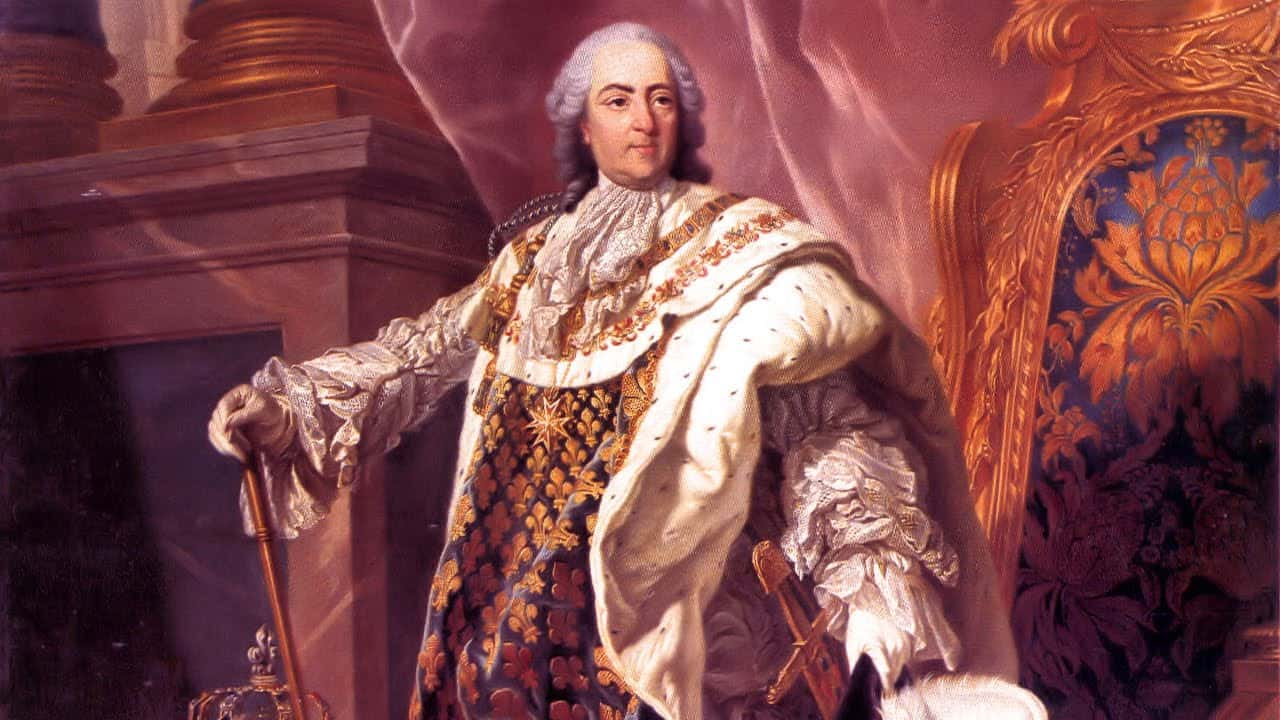 Youtube
Youtube

History's most fascinating stories and darkest secrets, delivered to your inbox daily.
88. Living to Learn
Louis’s passion for locksmithing was apparent from an early age. He was a lifelong nerd who excelled in scholarly subjects from history to geography and astronomy. He was also fluent in Latin, Italian, and even English.
89. Junior Varsity at Versailles
Despite the historic image of Louis as a weak and incapable leader, the future king did enjoy physical sports such as hunting with his grandfather and wrestling with his brothers.
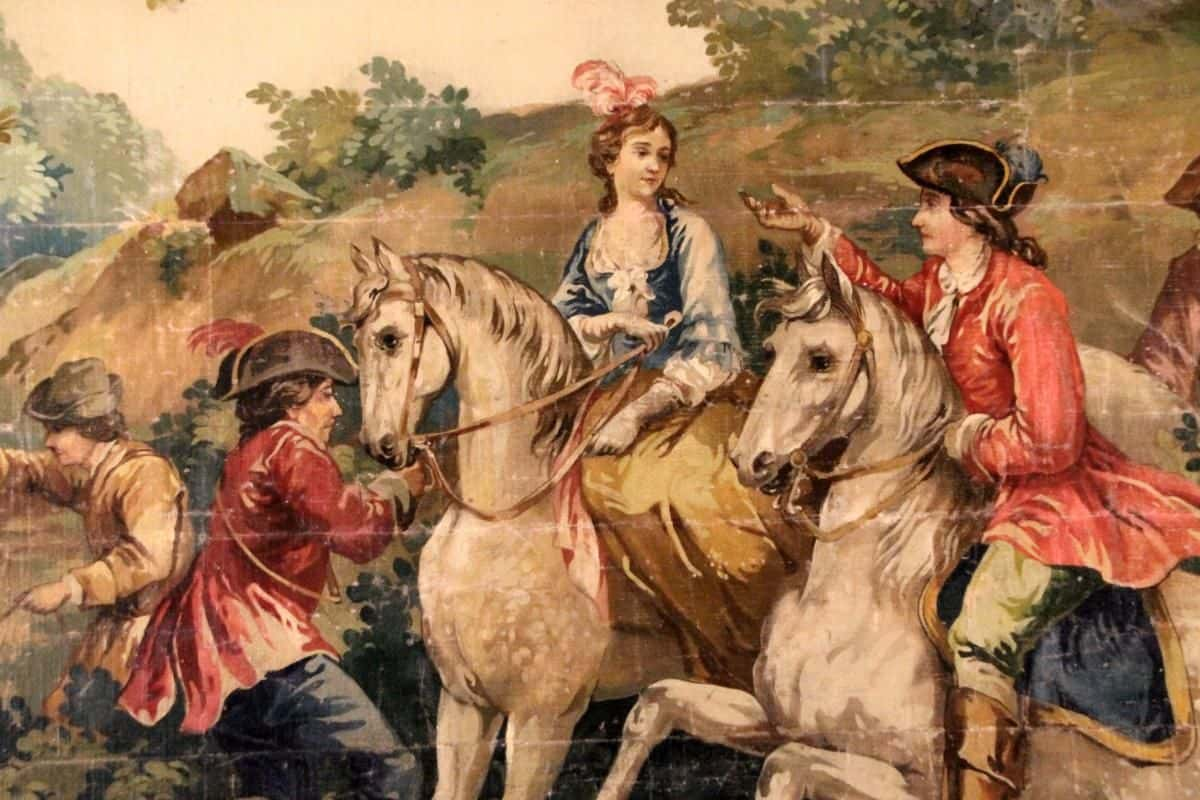 Pinterest
Pinterest
90. France Didn’t Ship It
In 1770, at the age of 15, Louis made his famous marriage to Marie Antoinette, his 14-year-old second cousin once removed. However, it was hardly considered something to celebrate among the French people. The Austrian alliance had pulled France into the unpopular Seven Years’ War, which led to France’s humiliating defeat by the British and Prussians.
The marriage to an Austrian princess was not a welcome reminder.
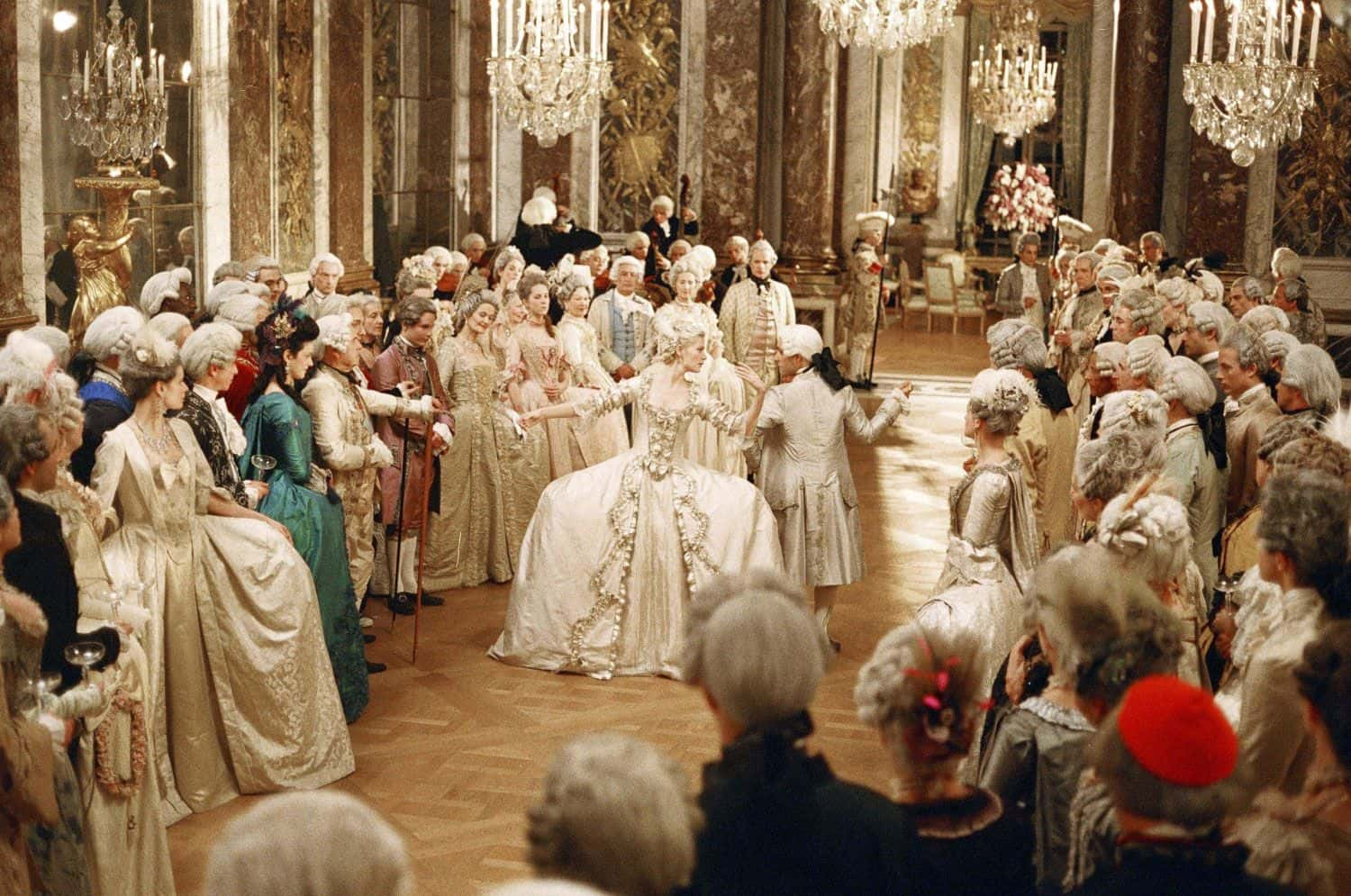 Pinterest
Pinterest
91. Taking Their Time
Officially, Louis and Marie Antoinette didn’t consummate their match until three years after their marriage. At least, that’s what’s reported. It’s more likely that they didn’t actually have sex until 1777—a whole seven years after they wed.
92. A Matter of Bed and State
The infertility (for whatever reason) of Louis and his wife was a target of public satire. Pamphlets called “libelles” mocked their woes, asking “Can the King do it? Can’t the King do it?”
93. Call Doctor House
Why did it take so long for Louis to “do the royal duty” with Marie Antoinette? Unlike Louis, the question still stands. In 1772, doctors suggested that the king suffered from phimosis—a medical condition that renders male arousal a painful experience. While surgery was recommended, it’s doubtful any procedure was performed, due to the risk.

History's most fascinating stories and darkest secrets, delivered to your inbox daily.
94. Fostering Tragedy
In 1787, Louis adopted a Senegalese slave boy named Jean Amilcar. He was “gifted” to Marie Antoinette, who insisted he instead be freed and adopted by the family—after being baptized as a Catholic, of course. Amilcar never actually lived with the royal family, unlike the three white adopted children of Louis and Marie Antoinette, but he was raised on the queen’s expense.
However, Amilcar’s fate after the Revolution proved bleak. When his boarding school fees could no longer be paid after his adoptive parents’ execution, Amilcar was thrown out into the streets and reportedly starved to death.
95. Up, Up, and Away
Louis sponsored the earliest European aeronautical experiments at Versailles in 1783. On September 14, Étienne de Montgolfier floated a rooster and duck over the palace using a balloon filled with hot air. A few months later, on November 21, Pilâtre de Rozier took this experiment to human levels and remained in the air for a record of 25 minutes.
96. Grandfatherly Feedback
As a teenager, Louis was called “ungainly” and “dimwitted” by his reigning grandfather, Louis XV, who didn’t let grandfatherly affection get in the way of honest critique.
97. Not a Cat Guy
Louis was mostly gentle towards everyone…but he hated cats. This might be because his grandfather—you know, the one who called Louis homely and not very smart—was a huge cat person. As a child, Louis was reportedly badly scratched by one of grandpa’s critters. Lucky for him, Marie Antoinette was a dog person.
98. Ready! Aim! Meow!
Louis made a habit of shooting at the pesky cats that overran Versailles. This was not considered uncouth at the time, because cats were mostly viewed as annoying at best and ominous at worst. Unfortunately, the king did accidentally shoot a female courtier’s pet feline, an act for which he had the royal decency to apologize and compensate her for.
 Pinterest
Pinterest
99. Law Abiding Citizen
On September 21, 1792, the National Assembly officially abolished the monarchy and declared France as a Republic. As a result, Louis XVI, then arrested for treason, was a king no more. All his titles were revoked, and he was officially to be known as “Citizen Louis Capet.” Although Louis was from the House of Bourbon, the Capets were the founding royal House of France.
Symbolism mattered more than accuracy in this case.
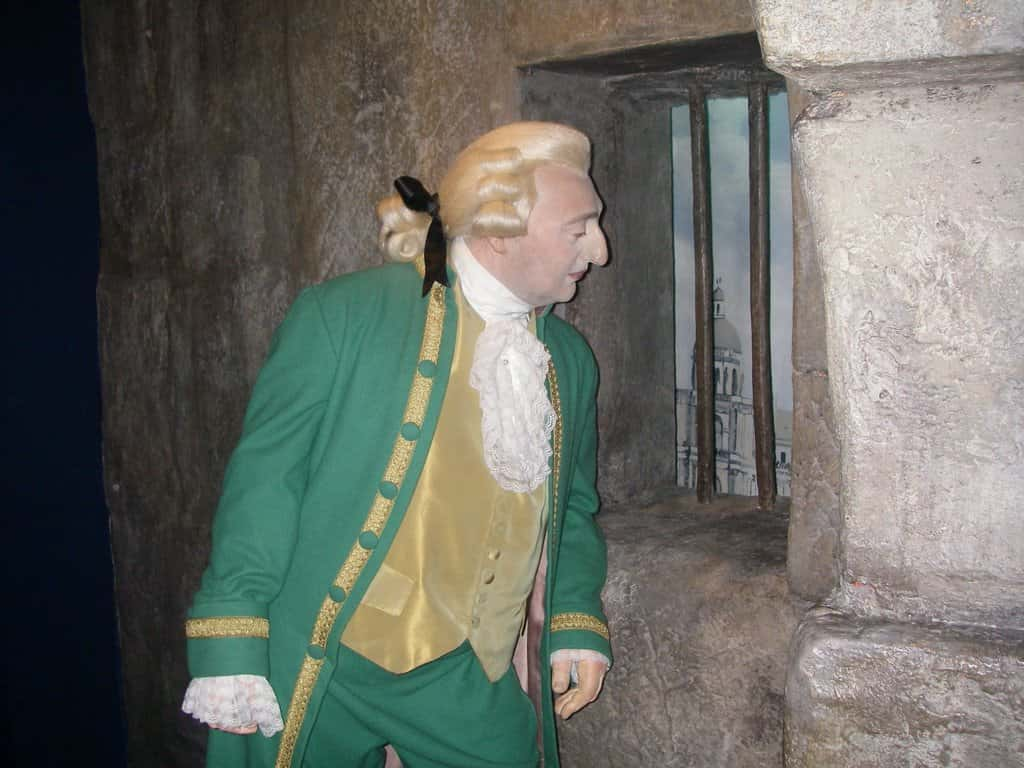 Valerie et Jacques au musée Grévin
Valerie et Jacques au musée Grévin

History's most fascinating stories and darkest secrets, delivered to your inbox daily.
100. I Hate Mondays
On Monday, January 21, 1793, “Citizen Louis” was led to the guillotine and beheaded upon the Place de la Revolution. By most accounts, his speech was dignified. He pardoned “those who are the cause of my death,” while also declaring his innocence.
 Youtube
Youtube
101. Nothing Like a Souvenir
For centuries, it was told that citizens swooped in around Louis’s freshly guillotined body to dip their handkerchiefs in his blood. Generally, this tale was regarded as an urban myth, but in 2012, a DNA test of preserved tissue samples proved this story to be true.
102. Now It’s a Party
In stark contrast to the elaborate kingly funerals of his predecessors, Louis XVI was buried in a mass grave along with other guillotined victims of the French Revolution.
103. Point Taken
According to legend, it was Louis XVI himself who suggested that a triangular blade would upgrade the guillotine into a more efficient killing machine. Eventually, he would get to test it for himself. Thanks, Louis!
104. Shoe Toss
In the 18th century, the streets of Versailles were filled with animals and excrement. It would be impossible to keep the same pair of shoes clean if you were regularly walking through the streets in them, so they were often disposed of every few days instead of cleaned. Contrary to popular belief, Marie Antoinette did not own that many shoes.
Other members of the Royal family spent more on clothes than she did, including her brother-in-law, who possessed enough shoes to have a different pair every day of the year.
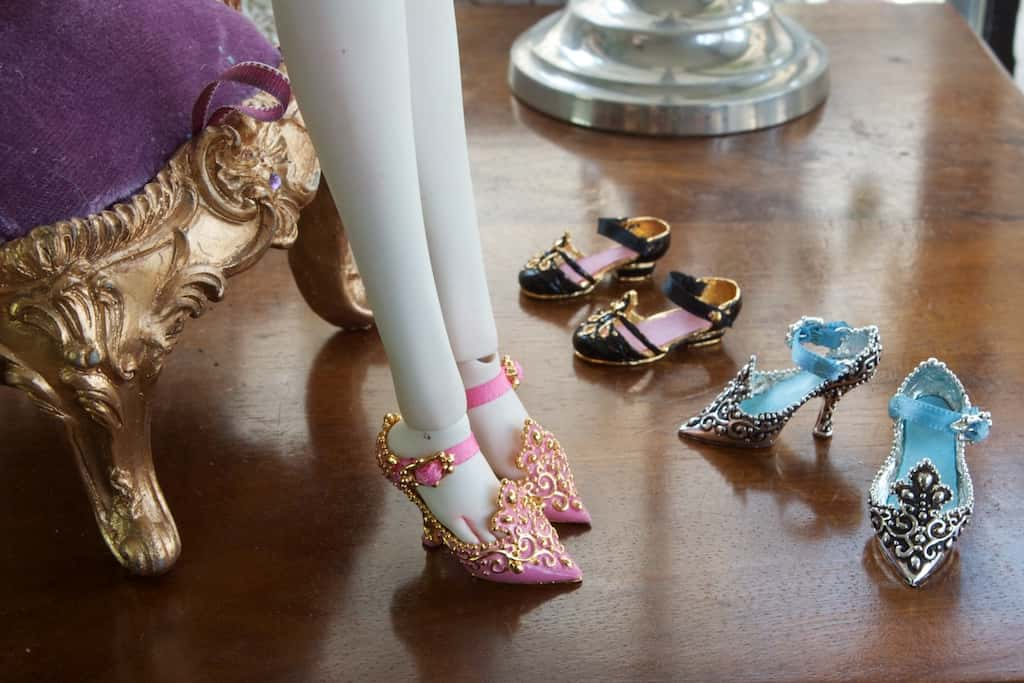 Enchanteddoll
Enchanteddoll
105. A Delicate Beauty
Marie Antoinette was described as being "delicately beautiful." She had grey-blue eyes, ash blonde hair, and pale skin. At age 12, she had corrective surgery to straighten her crooked teeth, and after that, she had a smile that was described as “very beautiful and straight.”
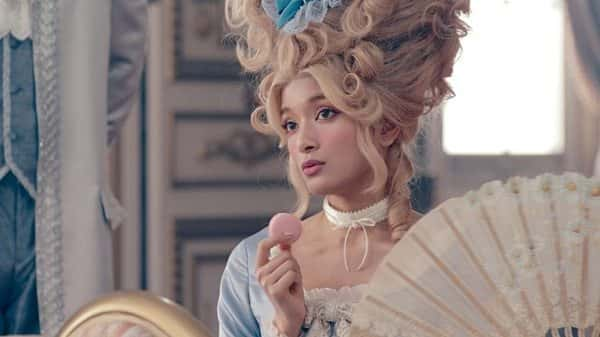 Excite
Excite

History's most fascinating stories and darkest secrets, delivered to your inbox daily.
106. Don’t Forget to Wear Clean Clothes!
As a child, Marie Antoinette was something of a tomboy. She would play with commoner’s children, ride horses, and hunt. Contrary to the popular image of her, her mother found it necessary to write her letters telling her to wear clean clothes and brush her hair even after she married.
107. School Wasn’t Her Thing
Marie Antoinette was a poor student, despite her tutor finding her “more intelligent than has been generally supposed.” He described her as “lazy” and “hard to teach,” and she supposedly had atrocious handwriting.
108. Famously Misquoted
Marie Antoinette never actually said “Let them Eat Cake,” which ironically, is her most famous quote. The words were supposedly the Queen’s response to being told that the peasants had no bread and were hungry, and has been cited as an example of her insensitivity to the plight of her subjects. There’s no historical evidence in newspapers, pamphlets, and other printed materials of the time, so it’s likely that the quote was picked up by the revolutionaries, and falsely spread as propaganda.
109. Vive La Republique!
The day of the execution, Marie Antoinette was placed in a tumbrel (a two-wheeled cart used during the French Revolution to take prisoners to the guillotine) and taken on a roundabout route through the city to the guillotine. When her head fell, it was shown to the thousands of spectators who cried “Vive la Republique.”
110. Courage, My Word
Moments before her execution, the priest present at the execution told her to have courage. She responded by saying "Courage? The moment when my ills are going to end is not the moment when courage is going to fail me."
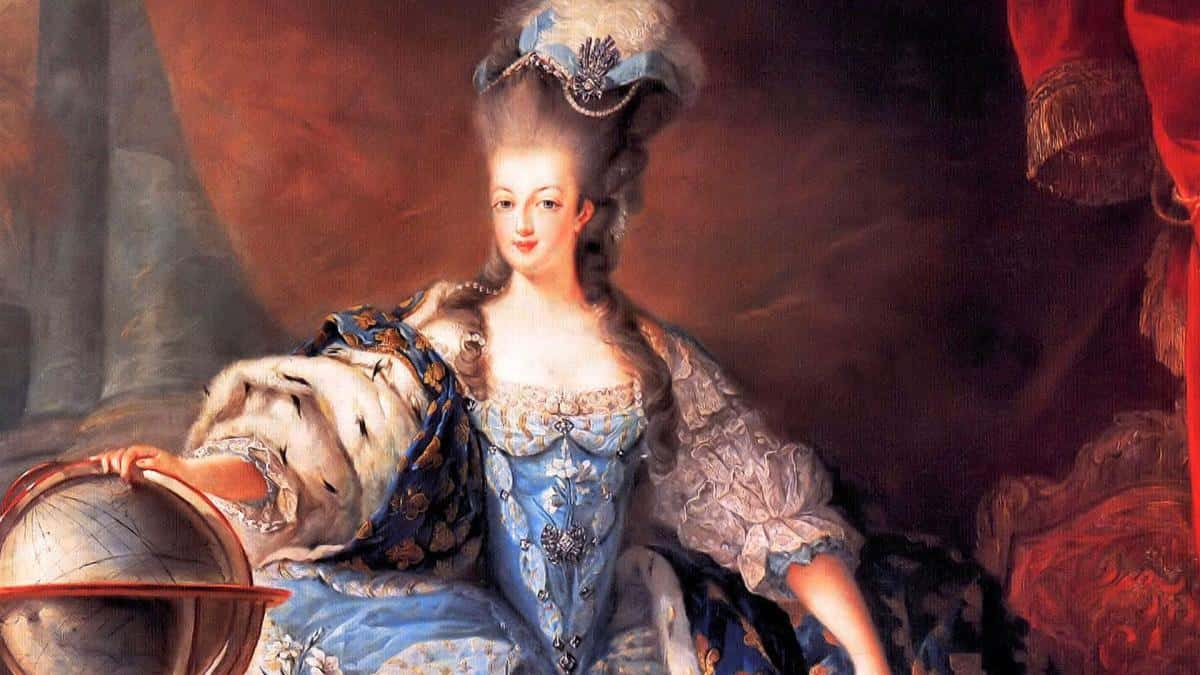 Playbuzz
Playbuzz
111. A Little Help From My Bro
While medical reasons might have caused Louis XIV and Marie Antoinette's bedroom issues, Louis’ performance woes were perhaps also rooted in a simple lack of sex-ed. In 1777, shortly before the consummation, Marie Antoinette’s brother, Joseph II of the Holy Roman Empire, came to visit Versailles. In his journal, Joseph described his sister and brother-in-law as “complete fumblers” when it came to sex, and how he advised Louis to “apply himself” more.
Apparently, his advice worked, as Marie Antoinette immediately got pregnant.

History's most fascinating stories and darkest secrets, delivered to your inbox daily.
112. Triple Threat
Virginia Oldoini—known better to history as the Countess of Castiglione—was born to a family of minor nobles in Tuscany on 22 March 1837. From these relatively humble beginnings, she would rise to become a legendary model, spy, and mistress to none-other than the Emperor of France, Napoleon III.
113. Lie Back and Think of Italy
In 1855, the Countess of Castiglione was tasked with pushing the cause of Italian unity onto Emperor Napoleon III of France—even if it meant pushing other parts too. Her cousin, the Count di Cavour, reportedly told her, “succeed by any means you wish—but succeed!” If that’s not a state-sanctioned licence to commit adultery, I don’t want to know what is. Indeed, political gears weren’t the only things that got turned, and Castiglione soon became the French ruler’s mistress.
114. Hot Gossip
From 1856 to 1857, Oldoini served as Napoleon III’s mistress. This new gig brought her into close contact with powerful folks like Queen Augusta of Saxe-Weimar and the first German chancellor, Otto Von Bismarck. Between rubbing elbows with elites, she passed intelligence from this powerful court to her allies in Italy.
115. She Wears Her Heart (and Your Hubby) on Her Sleeve
Dressed in her Queen of Hearts gown, Oldoini once scandalously entered a royal ball on the arm of her (married) lover, Emperor Napoleon III, right in front of his wife. At least the empress got one snipe in. The spurned wife reportedly gave Oldoini’s sexy outfit a once-over and told her, “The heart is a bit low, Madame.”
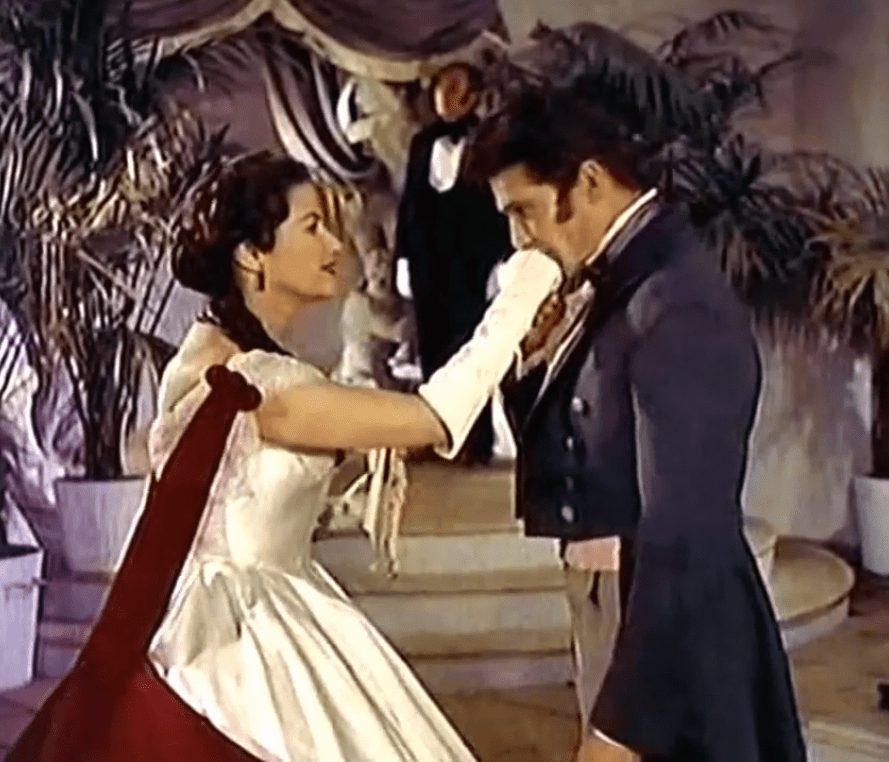 The Contessa
The Contessa
116. Broken Heart Queens Club
By 1860, Oldoini’s affair with Napoleon III had soured, and she had completely lost favor at his court. The reasons for her sudden fall from grace remain a private mystery.
117. The Eyes Have It
To no one’s surprise, the Countess of Castiglione met the Eurocentric beauty standards of her day. She is typically described as a wavy-haired blonde with pale skin, delicate features, and an oval face. According to lore, her eyes could change color from green to an almost supernaturally blue-violet. Pretty handy trick to have if you’re a model and spy.

History's most fascinating stories and darkest secrets, delivered to your inbox daily.
118. Putting the “Snap” in Snapchat
Oldoini’s fashion shoots often doubled as warning shots to her enemies. When her estranged husband tried to claim custody of their son, she sent him a photo herself in loose hair…and a knife in her hand. Naturally, the photo was titled “La Vengeance.”
 Shutterstock
Shutterstock
119. From Lover to Friend
While on the outside, Louis XV and Madame de Pompadour's relationship was happy and healthy, modern historians now know that the couple hid a dark secret behind bedroom doors. From 1750 onwards, Pompadour ceased being a sexual partner to Louis XV. They no longer actually made love. This was attributed to her very poor health. Over the years as Louis XV’s mistress, she suffered three miscarriages, and also “suffered the after-effects of whooping cough, recurring colds, and bronchitis, spitting blood, … as well as an unconfirmed case of leucorrhoea.”
However, her bond to Louis did not dim, as she served as a “friend of the King,” maintaining her influence at court.
120. Saved by My Sense of Style Again
In January 1757, Louis XV survived an assassination attempt thank to the thickness of his winter furs. The assailant, Robert-Francois Damiens, made his way through the king’s guard and managed to stab him. While he was injured, the furs had cushioned enough of the knife for him to survive.
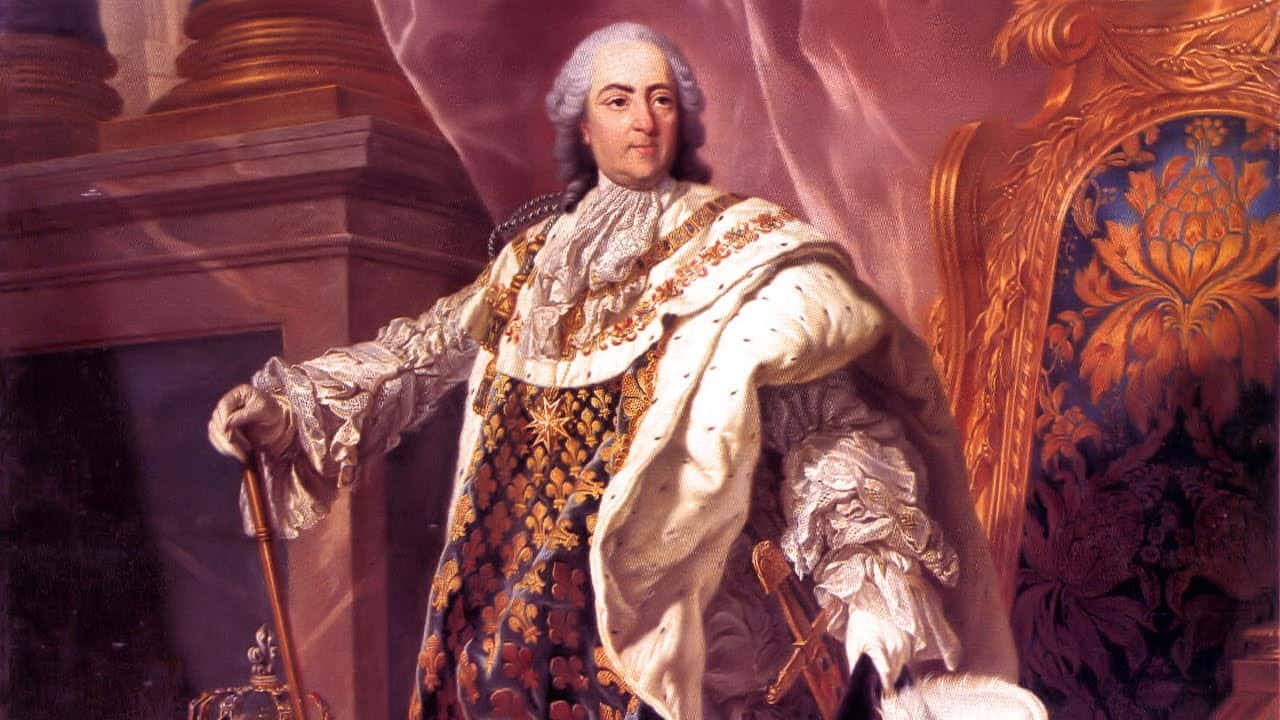 YouTube
YouTube
121. Does a Knife Need a Motive?
For trying to kill the king, Robert-Francois Damiens was drawn, quartered, and had his remains thrown in a bonfire (allegedly while he was still alive, though how anyone could survive being drawn-and-quartered I have no idea). If that weren’t enough, the house where he was born burned down, his father, wife, and child were exiled from France, and her siblings were forced to change their names.
There seems to have been no clear motive behind all this bloodshed: most agree he was simply suffering from severe mental issues and targeted the king over religious disagreements.
122. Paternal & Papal Invasions of Privacy
On October 2 1533, the Pope Clement VII married Catherine off to the french Dauphin (the son of the King), Henri. The couple were lucky to be the same age—just 14 years old—but old men still wormed their way into the honeymoon. Henri’s father, King Francis I, apparently stayed in the bedroom until the marriage was fully consummated, and the Pope visited the couple in bed the next morning to bless the previous night’s “proceedings.” Yick.

